Nature-Based Solutions Are Crucial to Combat the Climate Crisis, Leaders Say at COP28
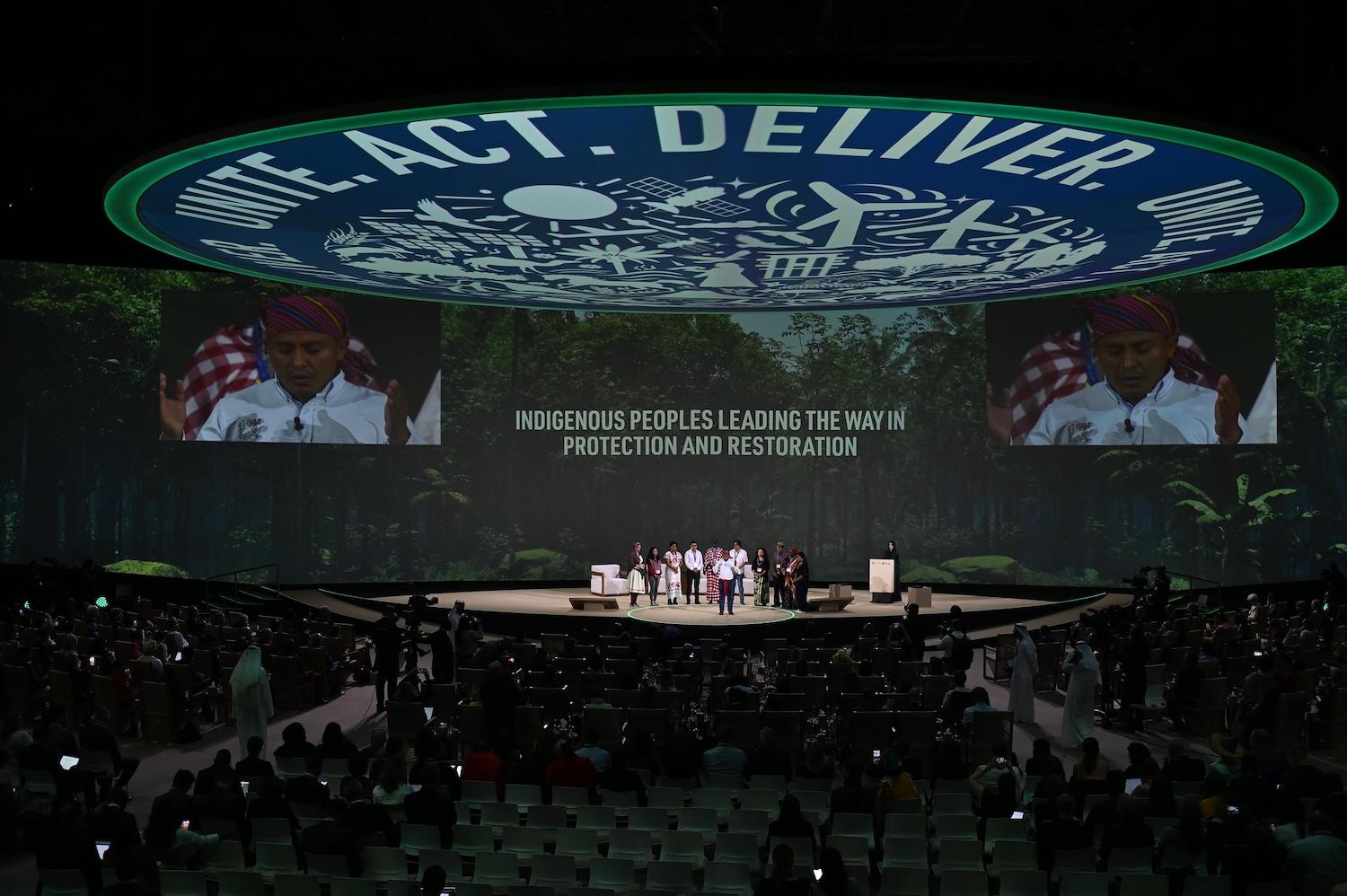

Leaders discuss nature-based solutions at the World Climate Action Summit at COP28. (Image: COP28 UAE/Flickr)
Human activities affect the Earth’s natural means to cope with the climate crisis. We can start solving that now by fostering nature's ability to sequester carbon, experts said at the COP28 climate talks this week.
“We are losing resilience in the whole capacity of the planet to buffer the stress caused by the climate crisis,” Johan Rockström, scientist and director at Potsdam Institute for Climate Change, said at the talks. “We are moving very rapidly toward the 1.5 degree Celsius limit. The only way to avoid it is with an enormous effort by nature.”
Featured in the 2023 Time 100 list, Rockström invented the “planetary boundaries” framework to evaluate systems that regulate Earth as a livable planet. Each system has a designated boundary that we cannot afford to cross if we want to maintain the stability of the planet’s ecosystems.
“We've done scientific studies that show about one-third [of the needed] reduction in greenhouse gases can be driven by nature-based solutions,” said Elizabeth Gray, CEO of the National Audubon Society, one of the world’s oldest nonprofit environmental organizations dedicated to the conservation of birds and their habitats.
Nature-based solutions refer to ways that nature's own processes can be harnessed to mitigate the effects of climate change, whilst supporting biodiversity and enhancing human livelihoods. They include practices such as planting trees, regenerative agriculture, agroforestry and community forest management.
The Rainforest Alliance is another organization heavily advocating for nature-based solutions at COP28 and highlighting its prior work in this area to illustrate nature’s vast potential. For example, Ghana’s Sui River landscape — one of West Africa’s prominent cocoa-growing areas that spans 244,000 hectares and includes five forest reserves — is struggling with deforestation and increased outbreaks of pests and diseases caused by climate change. Rainforest Alliance teamed up with the agri-business Olam and the investment program Partnership for Forests in 2018 to support local communities in setting up legally registered Landscape Management Boards to implement nature-based solutions to these local problems.
“Through these boards in Ghana, 2,600 farmers have been trained in nature-based techniques like water management, soil conservation and shade-tree management, leading to 4,000 farmers adopting the techniques and reporting improved productivity as a result,” Leila Yassine, global advocacy manager at the Rainforest Alliance, said at COP28. “They also initiated the planting of over 200,000 shade- tree seedlings to protect against the adverse effects of climate change.”
Nature’s strength has kept the Earth alive
Our oceans, plants and animals have absorbed 56 percent of man-made carbon dioxide emissions in the past decade, saving us from severe levels of warming, according to the most recent assessment from the Intergovernmental Panel on Climate Change (IPCC). “This is the largest subsidy to the world’s economy,” Rockström said. "If it hadn’t been for this nature’s existence, we would already have passed 1.5 degree Celsius today.”
Nature-based solutions not only reinforce climate resilience by restoring natural habitats and mitigating emissions, but they also aid carbon capture. If adopted on a large scale, they could deliver 37 percent of the climate change mitigation required by 2030 to prevent a dangerous increase in global temperatures and achieve the targeted 1.5 degrees Celsius warming limit of the Paris Agreement. Such nature-based solutions could also save $104 billion in adaptation costs by 2030 and $393 billion by 2050.
Nevertheless, there will be a period between 2030 and 2035 where we will overshoot 1.5 degree Celsius, and the only way to come back would be to decarbonize the global energy system and also to invest in nature, Rockström said.
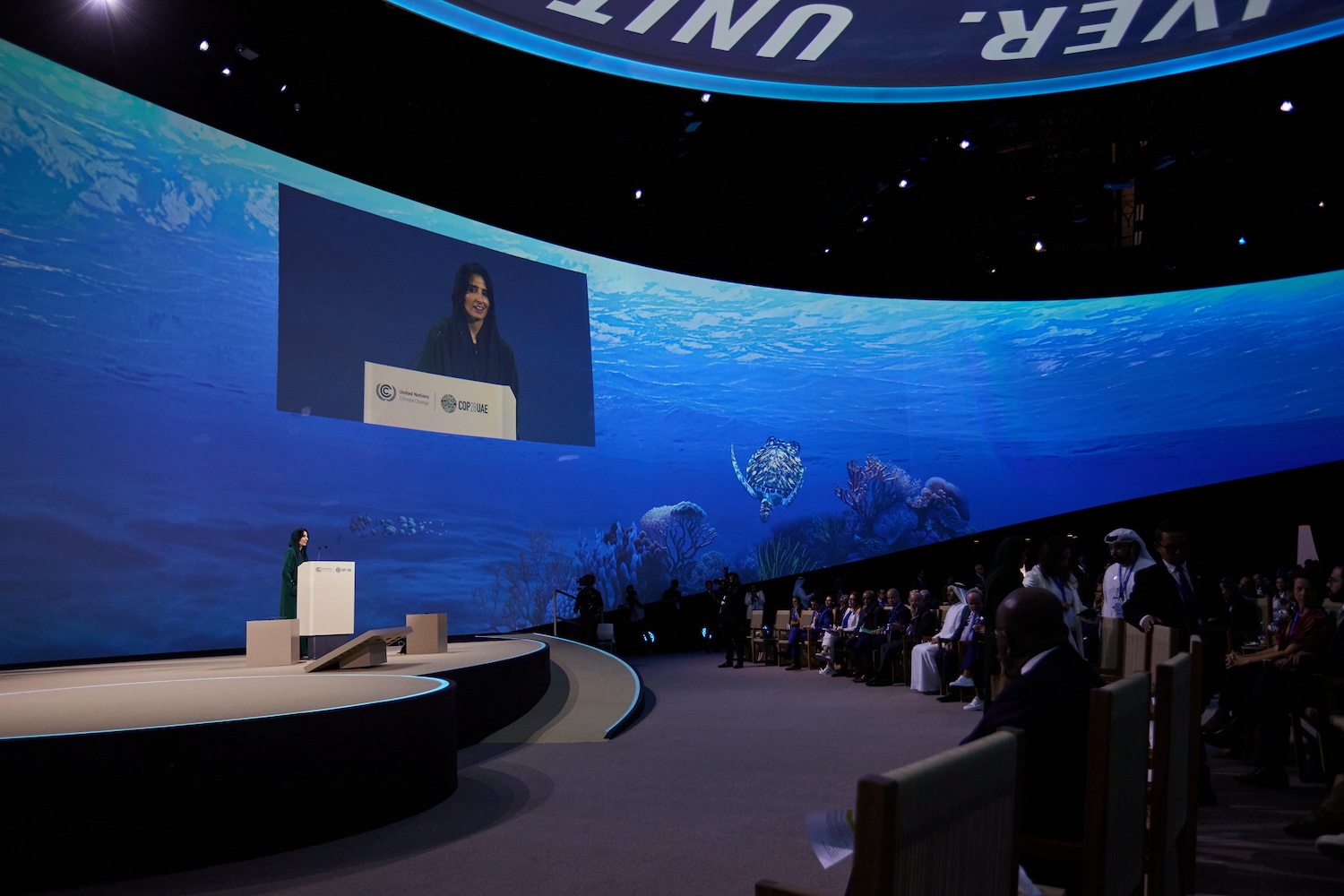
Restoring and protecting forests and oceans will put us on track
Oceans are the lungs of our planet and also the biggest carbon sink. They generate 50 percent of the oxygen we need, absorb 25 percent of all carbon dioxide emissions and capture 90 percent of the excess heat that is trapped by these emissions. As such, the ocean is central to helping us fight climate change.
After the oceans, forests are the largest storehouses of carbon. They absorb greenhouse gas from the air and store it above and below ground.
A recent global assessment of the carbon capture potential of forests shows that natural forests, outside of urban and agricultural areas, could capture 226 gigatons of carbon if they recovered from degradation and deforestation. That’s equivalent to approximately 23 years of human emissions.
Financing nature-based solutions must be top priority
To achieve those reductions in greenhouse gas emissions, the global community will need to invest $384 billion per year in nature-based solutions by 2025, according to the Rainforest Alliance. Less than half that is invested today.
“There’s an urgent need for increased financial backing for nature-based solutions,” said Yassine of the Rainforest Alliance.
If the world is to meet its climate, biodiversity and land degradation targets, investment in nature-based solutions must at least triple by 2030 and increase fourfold by 2050, advocates say.
Recognizing this need, on Sunday countries, foundations and development banks committed to deliver $1.7 billion in finance to meet climate and biodiversity goals. That includes a $100 million commitment from the United Arab Emirates (UAE), with an initial $30 million investment in the Ghanaian government’s new Resilient Ghana plan that combines development and nature-positive action.
Other partnerships in the initiative will help to develop anti-deforestation plans in the Democratic Republic of the Congo, Papua New Guinea, the Republic of Congo, and Ghana and mobilize private-sector financing for nature-based projects.
“Currently, only 8 percent of the global finance to tackle climate is going to nature-based solutions, yet the solution it is capable of solving over 30 percent of the problem,” said Gray from Audubon. “Financing is a huge issue.”
Funding is a start, but it is not enough. To achieve the full potential of nature to tackle climate change, nature-based solutions must be part of the climate policies drafted by leaders at COP28, leaders said.
“During this COP, nature-based solutions are still not getting the attention they deserve,” said Harisoa Rakotondrazafy, coordinator for the WWF’s Africa Adaptation Hub. “We need to make sure nature-based solutions are valued in addressing climate change impacts. They need to start being a part of the COP agenda because they form a crucial part of global climate adaptation solutions that will bring benefits to communities.”
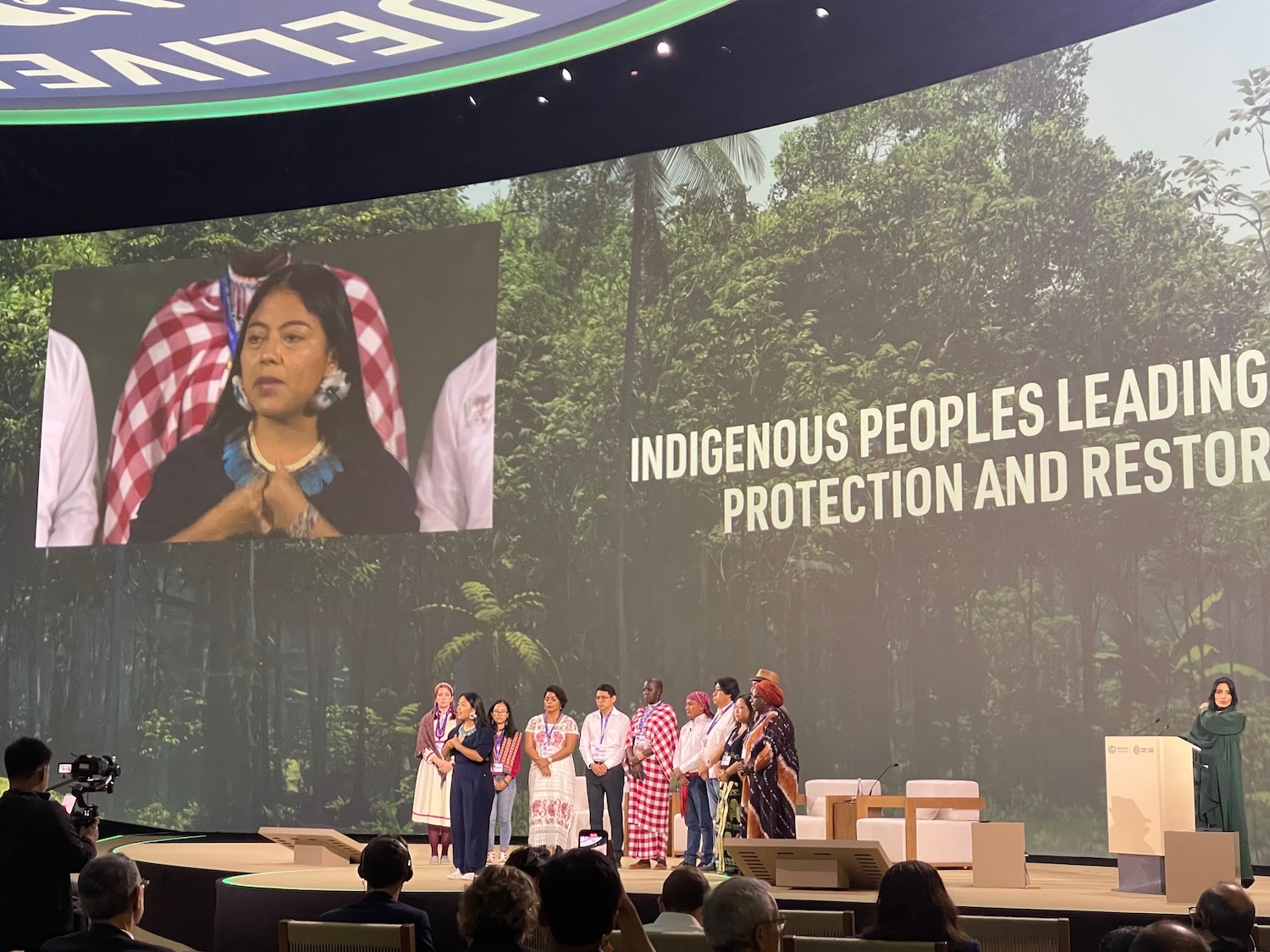
Indigenous peoples must be given resources to continue protecting the environment
Part of embedding nature into climate policy means listening to the people who interact with — and protect — nature the most. In particular, Indigenous Peoples make up less than 5 percent of the global population but protect more than 80 percent of its biodiversity. As custodians of nature, it is critical to support their seat at the table when discussing climate solutions and to provide them with resources to support their climate actions.
Alongside Rockström, elders from the seven Indigenous socio-cultural regions as defined by the United Nations spoke at the World Climate Action Summit at COP28 to frame the urgency behind restoring the powers of Mother Nature to help combat the climate crisis before us.
“Local communities, Indigenous Peoples, and smallholder farmers play a vital role in climate action, particularly in critical forest ecosystems and agricultural landscapes,” Yassine said. "They understand the realities on the ground and can tailor solutions to their specific local economic, ecological, and social contexts and the unique climate risks they face.”
World leaders including Brazil’s president, Luiz Inácio Lula da Silva, say knowledge from these communities will be a key focus of the COP28-to-COP30 partnership between tee UAE and Brazil. Brazil will host the COP30 climate summit in the Amazonian city of Belém do Pará in 2025.
In a call-to-action for world leaders, Norway’s Prime Minister Jonas Gahr Støre added: “Don’t count on nature to solve the climate crisis but take care of nature and it will solve it.”
Op/Ed: Is Clickbait Hurting Our Chances for Success at COP28?
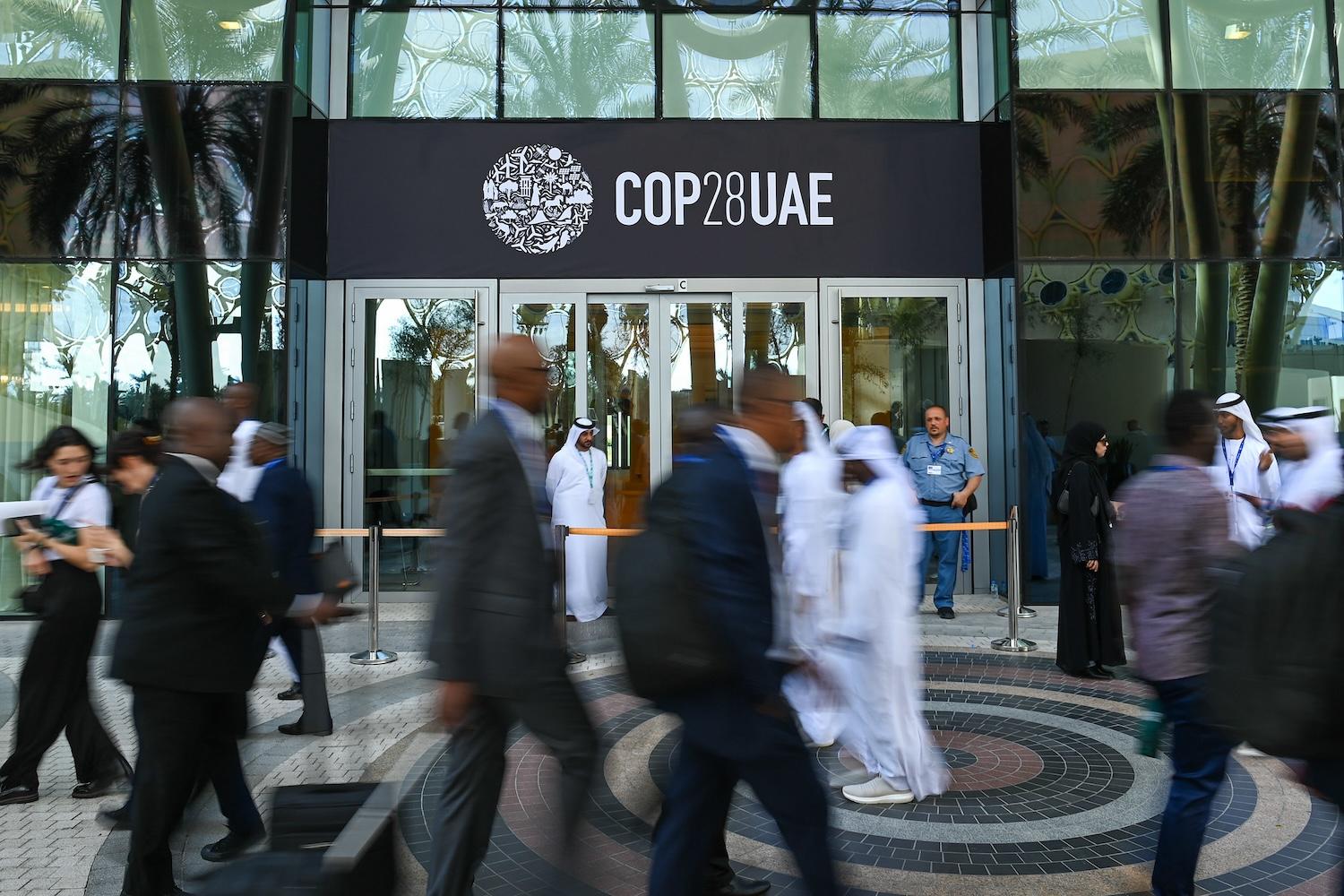

The use of negative terms that incite anger is proven to draw clicks and traffic for news stories, research shows. Sometimes referred to as "rage-baiting," negative and controversial headlines are amplified by social media algorithms and activate threat responses in our brains that naturally drive us to pay more attention. And there's no shortage of headlines like these when it comes to coverage of the COP28 global climate talks, which kicked off in Dubai last week.
"Al Jaber's no good, very bad week," reads a newsletter headline from the Guardian, referring to Sultan Al Jaber, the president of COP28 who also serves as CEO of the United Arab Emirates' state-owned oil company and chairman of its national renewable energy firm. "What do you expect when an oil executive runs the climate talks?" asked an op/ed headline on CNN. Another from Politico reads simply, "COP Out."
Albeit sensationalized, this reporting is fully accurate. A recent analysis indicates more fossil fuel lobbyists are present at COP28 than any of the talks before it. Another shows more than 80 percent of corporate advocacy on carbon capture and storage is out of line with climate science. The corporate watchdog InfluenceMap even published a "fossil fuel narratives fact-checker" to bust common lies, myths and misrepresentations put forward by the industry at COP28.
But beyond making people aware that the fossil fuel industry is up to its old tricks, something many implicitly know, how is this coverage helping us? How is it getting climate finance to vulnerable countries, passing the mic to impacted people, or moving the world any closer to reducing greenhouse gas emissions?
One could certainly argue that it's not a journalist's job to do any of those things, only to expose the truth and tell people what's happening. But what we decide to cover matters. If all readers see are news stories about how much of a failure COP28 is when it's barely started, that's the impression they'll be left with — and that's not a complete picture, nor does it reflect the tireless efforts of millions of people around the world to counter climate change.
It may not even result in the collective outrage and push for action some would expect, as studies show that continued exposure to negative news coverage may actually desensitize us to unethical behavior.
In our solutions journalism coverage of COP28, we're hoping to do things a bit differently. While solutions journalism doesn't mean putting our heads in the sand or covering only the positive, it looks to establish a new normal in which solutions to challenges are also newsworthy — even if they're not as inflammatory as something that engages anger.
This is purely subjective opinion, but the way I see it is: Yes, the fossil fuel industry has done untold damage to the earth and the people who live here, and evidence suggests they'll continue to do it if we let them, but we also have a finite amount of time to do something about a threat that could decimate humankind as we know it. The time we spend talking about what's gone wrong should be reserved for impacted communities seeking justice, and the rest of us should ask ourselves some questions. Do we want to spend the time we have left talking about who the bad guys are, or do we want to lift up (and learn from) what is actually proven effective for the crisis we face?
We as writers can jockey for position on who has the most clever prose to indict [insert bad actor here], but couldn't we channel our collective brilliance toward something that is more productive?
Stories of the people and communities acting today to address climate change are languishing on the vine and left on the cutting room floor in favor of what's deemed more "important," more "newsworthy" or more likely to drive traffic.
As a result, around 70 percent of Americans say coverage of climate change makes them feel sad, while only half say it makes them want to take action and 38 percent say it makes them optimistic we can address the problem, according to October research from Pew.
Some newsrooms are beginning to push for change in partnership with Covering Climate Now and the Solutions Journalism Network, a nonprofit dedicated to advancing solutions coverage.
Over the past year, nine news outlets including Grist, The Sacramento Bee and The Washington Informer moved to fully integrate solutions reporting into their coverage of climate change under a program called Climate Beacon. Resulting stories highlight how Washington’s cap-and-invest system raised $300 million from polluters to fund climate programs, ways farmers can protect pollinators from climate disruption, and how Colorado is navigating challenges to deploy federal funds to expand clean energy.
These stories aren't breaking news. They represent long slogs that unfold for months or even years outside of the mainstream public eye. They don't bleed, so in many newsrooms, they don't lead. But they could, and that shift could begin to transform public perception of our ability to move the needle on climate change, as research indicates that solutions coverage leaves people feeling more energized and motivated to take action.
Make no mistake, we are nowhere near where we need to be in order to cap global temperature rise at 1.5 degrees Celsius above pre-industrial levels, which climate scientists agree is a crucial tipping point. The way we're going, experts estimate the world will cross the 1.5-degree threshold by the 2030s or sooner. The ongoing denial and delay tactics perpetuated by the fossil fuel industry got us there. And that has continued at this COP, including the push to water down COP28 policy language around a global "phaseout" of fossil fuels to a more loosely worded "phase down" or no mention of fossil energy at all.
But if we only tell the story of fossil fuel companies, their executives and their decades-long legacy of environmental destruction, we leave little space to tell the story of those who are impacted by that destruction — and those who are pushing back against it.
In our coverage of COP28, we'll touch on smallholder farmers using nature-based techniques that allow soils to absorb more carbon, we'll explore how Indigenous wisdoms can inform climate policy, and we'll speak with some of the policymakers, scientists, advocates and business leaders who are pushing for a decisive outcome around a fossil fuel phaseout.
The Solutions Journalism Network will begin accepting applications for a second round of Climate Beacon newsrooms later this month, and as we continue to develop our own solutions reporting of climate change and the other issues core to the sustainability and social impact space, we at TriplePundit will be watching closely. We encourage our community of readers to share your feedback about our new approach with us here.
Less Talking, More Doing: This $700M Climate Laboratory Shows ESG is Alive and Well
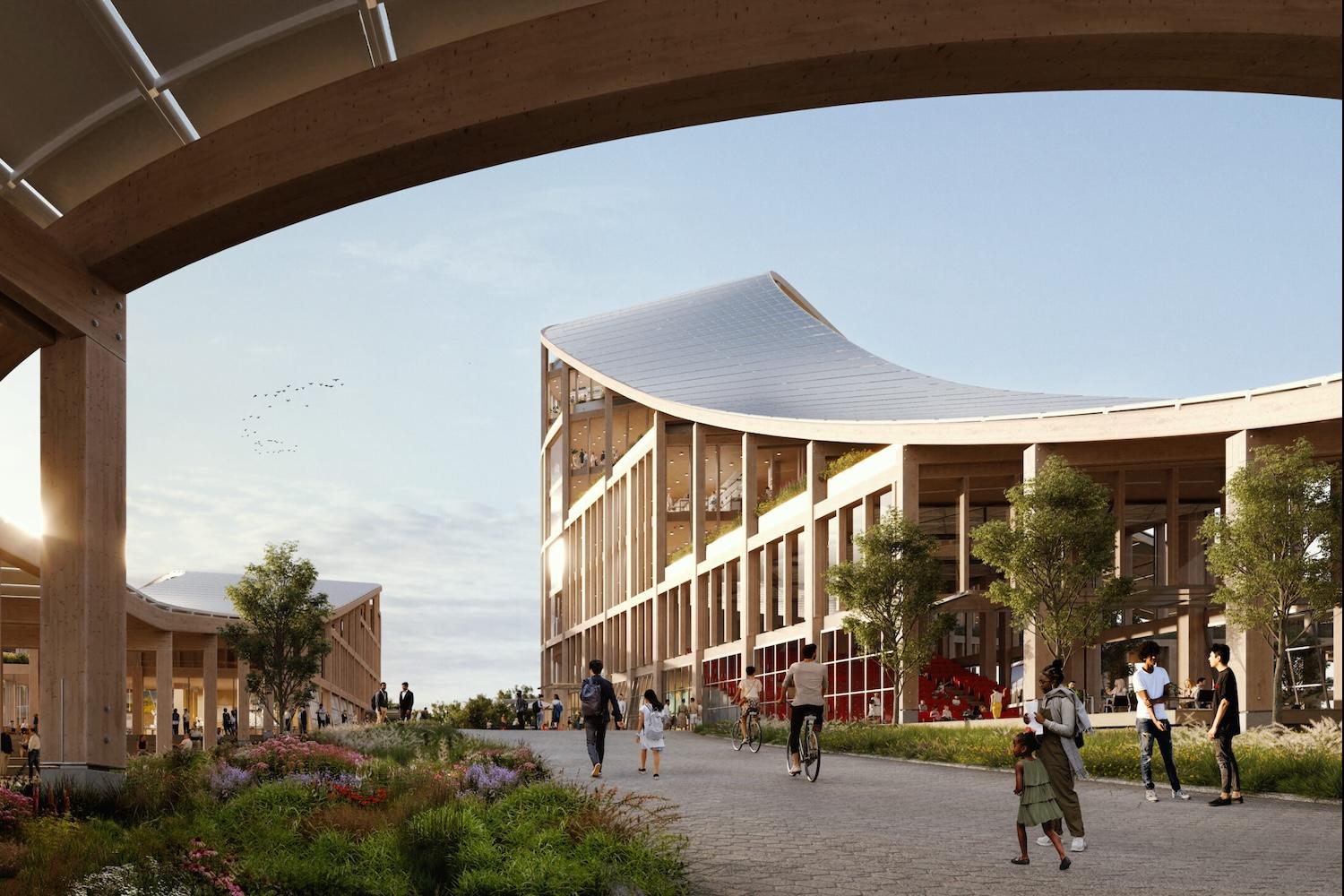

A rendering of the auditorium and classroom space at the New York Climate Exchange. The planned $700 million laboratory for climate solutions on New York City’s Governors Island is a collaboration between the city government, technical universities and companies, in a sign that corporate climate action can have an impact even amidst "anti-ESG" backlash. (Image: Skidmore, Owings & Merril)
Corporate action on climate change and other social and environmental issues has become a political football in the U.S. The term ESG in particular, which refers to corporate environmental, social and governance principles, is now a flashpoint for many critics. In response, some corporate leaders have stopped referring directly to ESG principles, but that doesn't mean they've stopped acting on them.
ESG by any other name
Anti-ESG rhetoric became a familiar fixture on the U.S. political scene over the past two years. It’s often mixed with racially tinged references to “woke capitalism,” and it is also linked to new state legislation aimed at protecting fossil fuel interests.
The law firm K&L Gates is among those tracking the spread of ESG-related legislation in the U.S. It identified 22 states adopting some form of “anti-ESG” laws, many within the 2023 legislative session.
The negative attention has prompted a change in the way that some firms discuss ESG goals and principles. One high-profile example is Larry Fink, CEO of the leading investment firm BlackRock. Speaking at the Aspen Ideas Festival in June, Fink cited politicization as the reason he stopped using the term ESG, though he said BlackRock hasn't changed its stance on ESG issues, Reuters reported.
Other experts in the field agree. The controversy over ESG is “clearly a theme in media and politics,” said Marjella Lecourt-Alma, CEO and co-founder of London-based Datamaran, an ESG platform powered by artificial intelligence. “But when we talk to our corporate clients in the U.S., it’s not really an issue. Some of them say they watch their words a little bit, but in terms of ESG risks and opportunities, we talk about biodiversity, climate risk, human rights, supply chain — then all of a sudden you are talking about business.”
Economies already lose hundreds of billions of dollars each year to natural disasters and other weather-related impacts that are worsened by climate change. Couple that with trillions in losses tied to economic inequality, and external issues become business risks that are difficult to ignore. “What is most important to the business remains the key driver,” Lecourt-Alma said. “Business leaders realize there are things happening outside of their business that are impacting their business, and they need to step up and internalize it.”
That tracks with a recent Bloomberg survey involving 300 of its terminal users. “Bankers, money managers and other financial market participants are starting to loathe the label ‘ESG’ — but they’re also sticking with the strategy,” the outlet reported in August.

Actions speak louder with a public-private climate lab in New York
In this context, the New York Climate Exchange is a powerful example of how businesses can take meaningful action on climate change, regardless of political headwinds.
The Exchange was formally announced in April as a new institution tasked with developing climate solutions. The effort is spearheaded by Stony Brook University, the flagship research institution of the State University of New York, in partnership with IBM, and its collaborative model engages businesses, academic institutions and governments.
Joining IBM as a core corporate partner is the global firm Boston Consulting Group. Moody’s also signed on as an affiliate partner, and the Stockholm-based sustainable development firm Urban Systems is participating in an advisory capacity. The New York City business community is also represented by the Chambers of Commerce from the Bronx, Brooklyn, Manhattan, Queens and Staten Island.
A combined $150 million pledge from Bloomberg Philanthropies and the Simons Foundation will go toward setting up the Exchange in a new $700 million facility on Governor’s Island in New York City, expected to open in 2028.
The Exchange “will be a first-of-its kind international center for developing and deploying dynamic solutions to our global climate crisis, while also acting as a hub for New Yorkers to benefit from the rapidly evolving green economy," Stony Brook's website reads.
IBM will work with the university on job training and climate research programs at the Exchange. That includes a planned Sustainability Accelerator for social impact programs focused on the application of IBM technologies to help people who are vulnerable to climate impacts and other environmental threats.

The push to make New York City a "living laboratory" for global climate solutions
In another early indication of the potential for the Exchange, the prominent climate policy and finance expert Stephen Hammer was named as the founding CEO of the new institution in November.
Stony Brook expects the Exchange to reflect and amplify Hammer’s 10-year experience as a senior policy advisor on urban-scale climate solutions at the World Bank, where he is credited with an instrumental role in incorporating climate change into the bank’s lending practices.
“The Exchange is not just another institute — it’s part think tank, part do-tank — serving as a training ground for the climate leaders of tomorrow and an incubator for technology and market entrepreneurs,” Hammer said in a press statement. “It’s meant to innovate and have an impact, to defend science, and to make New York City a living laboratory for international solutions."
Next steps for high impact
Through Stony Brook and other high-profile partners including Brookhaven National Laboratory, Georgia Tech and Oxford University, the Exchange could contribute to a positive snowball effect. “There are a lot of businesses today that are starting to benefit from new innovations around clean energy and water technology,” said Lecourt-Alma of Datamaran. “They get funding, and they become the new industry leaders.”
As for the future of ESG, that depends partly on the ability of businesses to fill their ESG staff positions. Taking note of the ongoing ESG skills gap, Lecourt-Alma advocates for a strategic, data-driven approach. Software that leverages artificial intelligence, such as Datamaran's own offering, can reduce work time while allowing companies to clearly track their progress, plan their actions, and establish governance mechanisms to hold leadership accountable, she said.
Business leaders need to ask themselves key questions including how the company is organized, who is in charge, and how it internalizes ESG principles, Lecourt-Alma advised. “The smart way to ESG starts with governance, not compliance,” she said.
COP28 is a Defining Moment for the Oil Industry
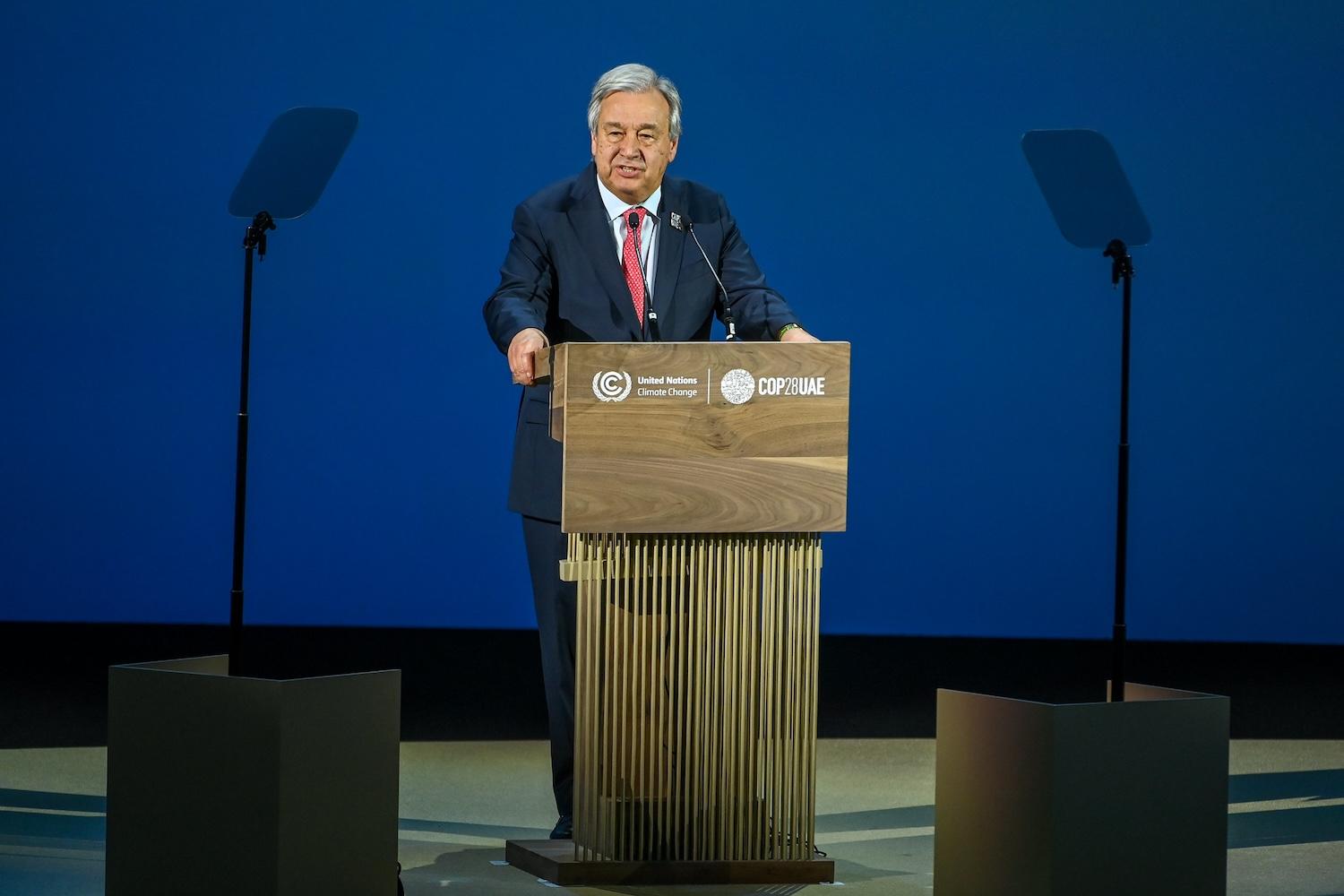

United Nations Secretary-General António Guterres speaks during the World Climate Action Summit at COP28 on Friday. (Image: Stuart Wilson/COP28 via Flickr)
Central to the climate challenge is the urgent need to address the role of the oil industry and its rising emissions of greenhouse gases and short-lived climate pollutants. The global COP28 climate talks are a key moment for the oil sector to reassess its trajectory and acknowledge that a transition to cleaner energy sources is not just desirable but a financial and economic imperative — and that ultimately a zero emissions future is one that requires a phaseout of unabated fossil fuels.
The industry needs to demonstrate ambition on two fronts: it needs to decarbonize its own operations on a rapid timescale, and it also needs to reckon with the unavoidable truth that, ultimately, it is the burning of fossil fuels that is driving the climate crisis.
Many of the world's biggest oil companies took a step forward in responding to this call with a pledge at the start of COP to reduce methane emissions to near zero by 2030. This is an important step that represents a positive move by the industry toward a larger transition strategy. Still, while slashing methane, a potent greenhouse gas that significantly speeds up global warming, is a necessary move, it only addresses a fraction of the risk the economy and planet faces. Oil and gas companies have to do much more.
There is a particular need to see national oil companies (NOCs) step up their leadership. While these state-controlled companies often get less attention than the ExxonMobils of the world, they produce the majority of the world’s oil, as well as outsized amounts of pollution. The leakiest NOCs can release methane at 100 times the rate of a well-performing investor-owned oil company.
Additionally, fossil fuel producers must set science-aligned, net-zero targets. This means, at a minimum, zeroing out emissions from their direct operations on a short-time horizon — well before 2030. A 2023 report from the International Energy Agency outlines cost-effective strategies the industry can take to zero out methane emissions, from replacing old equipment to better detection of leaks. They should also develop and, in the interest of transparency, publish comprehensive transition plans outlining short- and long-term steps to decarbonize business operations, products and services.
As part of these transition plans, companies need to include increasing capital expenditures to invest in technologies like clean energy to the point that it represents a majority of what they spend. These commitments, which Ceres advocates for across six of the highest-emitting sectors, are vital to halving greenhouse gas emissions by 2030 and propelling us toward a net-zero global energy economy.
At COP28, hundreds of institutional investors and major companies are calling for change in the oil and gas industry. More than 600 investors with more than $42 trillion in assets under management have called for policies to support a phaseout of fossil fuels. More than 200 companies, collectively generating more than $1.5 trillion in global annual revenue, also came out in support of a fossil fuel phaseout and a faster transition to clean energy.
This united front of investors and companies underscores the wide-ranging support for an impactful agreement at COP28. They're advocating not only for the phased elimination of fossil fuel usage in line with the push to cap global temperature rise at 1.5 degrees Celsius above pre-industrial levels, but also for ambitious targets to triple renewable energy capacity and double energy-efficiency rates by 2030.
Recent events also underscore the urgency of increased climate action. COP28 kicked off shortly after the release of a new National Climate Assessment, which found that the U.S. alone has experienced a staggering increase in billion-dollar weather and climate disasters, costing at least $150 billion annually. With global emissions and temperatures rising, these figures will only climb, further negatively impacting economic growth and compounding societal costs.
The United Nations' first global stocktake report, released in September, also illustrates a stark reality that the world is off track to meet the goals of the Paris Agreement.
COP28 comes as a moment of profound reckoning and potential transformation awaits us on the global stage. In the pursuit of a net-zero economy and world, the oil industry's commitment to this urgent clarion call from investors will be a barometer for the success of COP28 and our collective ability to confront the climate crisis.
TriplePundit's Sustainable Holiday Gift Guide for 2023


(Image: asife/Adobe Stock)
It's that time of year again! From our favorite sustainable and socially conscious brands to advice on buying used and shopping local, we love sharing our top picks for sustainable holiday gifts with our community every year. Read on for our 2023 favorites, which can all ship in time for the holidays.
Consider buying used for the most sustainable holiday gifts
We love learning more about socially conscious brands and the impact they have around the world, but at the end of the day, the most sustainable holiday gifts you can find are items that already exist and may otherwise go to waste. And before you get hung up on giving your loved ones a dusty item from a thrift store shelf, more than 90 percent of Americans say they'd be open to receiving a secondhand gift for the holidays, according to 2022 polling from Morning Consult and the online secondhand retailer Poshmark.
And for good reason: Thrift stores are bursting at the seams with lightly-used items that are ready for a second life, and a growing collection of retailers now host their own resale shops featuring pre-owned items that are still of high quality. Head to REI and Patagonia for outdoor gear or brands like The North Face and Eileen Fisher for clothing and outerwear worthy of a second life. Check out more of our favorite re-commerce shops here for sustainable holiday gifts that reduce waste.
Shop locally for sustainable holiday gifts that support small businesses near you
Small businesses are the lifeblood of our cities and towns, and many are still struggling to build back from the pandemic. Your patronage this holiday season can help your favorite mom-and-pops stay open into the new year and beyond — making local wares some of the most sustainable holiday gifts out there.
Standby apps like Google Maps and Yelp can help you find small businesses in your community that could use your support, and a growing number of apps and websites also catalog small businesses owned by women and minority entrepreneurs — which were among the hardest hit during the pandemic. Check out We Buy Black and EatOkra to discover local Black-owned businesses, Sol-Latino for finding Latino-owned businesses, the Pride App for finding LGBTQ-owned businesses, and Oya to find women-owned businesses.

Bag with many possibilities from Catalina Straps
Catalina Straps is all about bringing to the beauty of Indigenous artistry to the global marketplace. Its premium leather bags are handmade by women artists in Bogota, Colombia. They're designed to be mixed and matched with the brand's patterned straps, made by women artisans from the Wayuu community on Colombia's Caribbean coast, to suit any mood and outfit. You can also find colorful straps for carrying yoga mats and reusable water bottles for hands-free errands with a socially conscious twist.
Along with paying fair wages for its artisans wares, Catalina Straps donates a portion of each purchase to fund local initiatives established by the Wayuu community. The brand is also part of the TriplePundit family: Founder Catalina Tellez Hopkins is married to our colleague David Hopkins, VP of strategic partnerships for TriplePundit's parent company 3BL.
"Every Catalina Strap purchase contributes to social and environmental causes. We proudly give back by dedicating 10 percent of each purchase to the Wayuu community, the talented artisans who breathe life into our straps," Tellez Hopkins says. "Join us in making a meaningful impact — one stylish adventure at a time.”

A cookbook that supports humanitarian relief from World Central Kitchen
Michelin-starred chef José Andrés founded World Central Kitchen after the devastating 2010 earthquake in Haiti to bring chefs and volunteers together to provide meals immediately following natural disasters and other crises.
The nonprofit has moved swiftly to the epicenter of virtually every major disaster since — most recently responding to Hurricane Otis in Acapulco, Mexico, and another deadly earthquake in Afghanistan. It's also on the ground with partners to provide food in both Israel and Gaza and has become the largest food relief organization in war-torn Ukraine.
The World Central Kitchen Cookbook includes a collection of stories and recipes that reflect the many places the nonprofit has cooked around the world. Famous chefs and local cooks discuss their experiences with humanitarian relief through food, while sharing some of the recipes they served to bring warmth to people in crisis. Some celebrity friends of the nonprofit contributed as well — think: a breakfast taco recipe from former U.S. first lady Michelle Obama and a foreword from "The Late Show" host Stephen Colbert. All profits from sale of the cookbook will go to support World Central Kitchen.
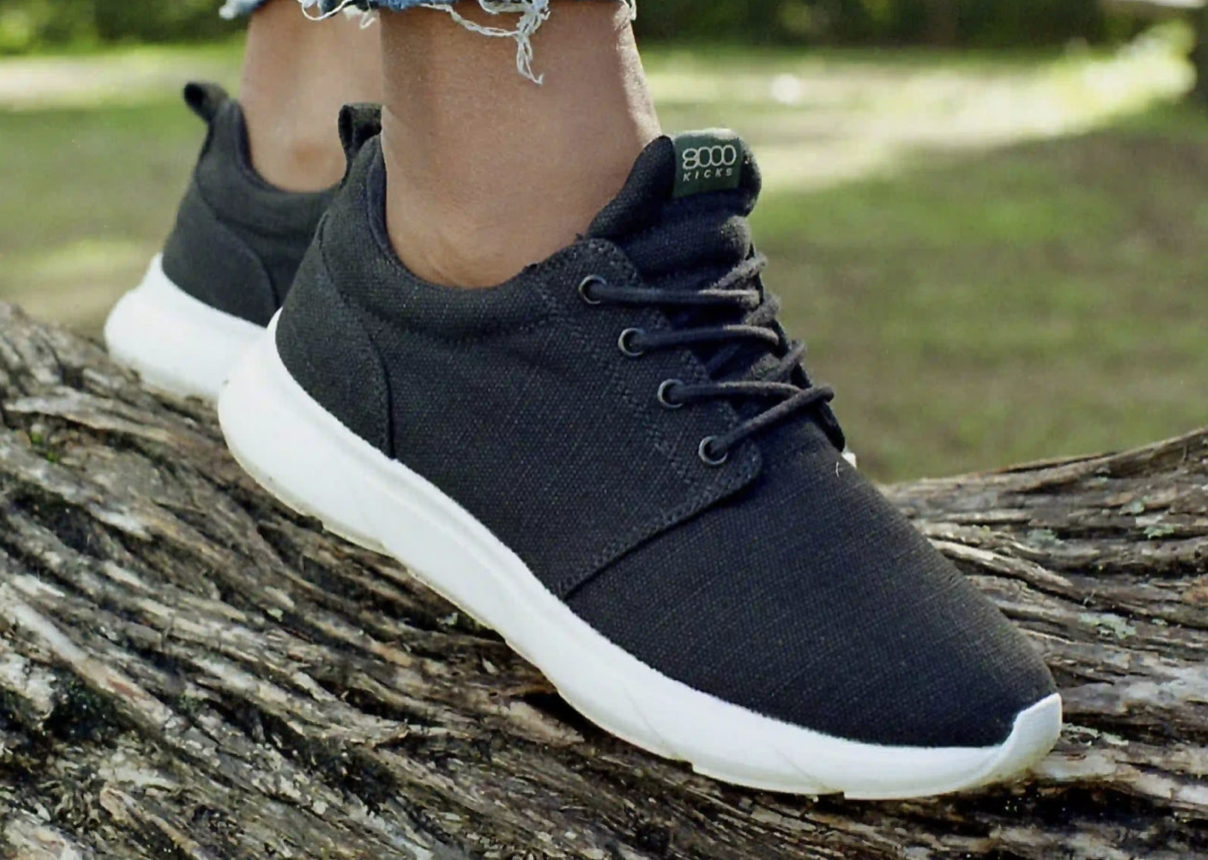
Explorer hemp sneakers from 8000Kicks
8000Kicks makes sneakers, backpacks, and accessories for men and women using unconventional materials that cut down on environmental impact and make great sustainable holiday gifts. The company also pays a living wage and posts the salary it pays manufacturing workers on its website.
These Explorer sneakers are made from hemp fibers, with a sole made from materials derived from algae blooms. The waterproof sneakers are billed as both durable and comfortable, and they earned the stamp of approval from outdoor-lover and TriplePundit editorial assistant Taylor Haelterman. "Coming from someone who loves a good sneaker, these are very comfortable," she said. "I've actually been rocking them most times I leave the house."

Gratitude gift set from Prosperity Candle
Show appreciation for loved ones, friends and colleagues while supporting employment for women artisans with this gift set from Prosperity Candle. It includes one of the brand's signature hand-poured soy candles scented with essential oils rather than synthetic fragrances, along with a fair trade chocolate bar from Divine Chocolate. In a thoughtful touch, this is also a gift that keeps on giving, with a set of gratitude cards featuring quotes on the front and space for notes on the back, so your recipient can also show those close to them that they're appreciated.
Prosperity's candles are made by women artisans who are building new lives in the U.S. after living as refugees. The company also offers tips for cleaning and reusing candle jars after the scent is used up, giving these sustainable holiday gifts a second or third life long after the new year.

Infinite palette from Cheekbone Beauty
Cheekbone Beauty was founded with inclusion and sustainability at the center. Inspired by founder Jenn Harper's Anishinaabe roots, the brand features Indigenous women and other women of color prominently across its marketing and looks toward Indigenous wisdoms to reduce the environmental impact of its vegan and cruelty-free cosmetics line.
A portion of all sale proceeds are donated to support education for Indigenous youth, and the upstart brand has donated more than $150,000 to various causes since its founding in 2015. “I really wanted to create a brand that highlighted Indigenous faces and gave back to the community,” Harper told TriplePundit's Amy Brown back in April.
This magnetic face palette in particular speaks to the brand's push to create more sustainable products. The formulas feature one of Cheekbone's hero sustainability ingredients — cornstarch from organic farming used in place of talc. And when shades are used up, they can be easily replaced with refills at $7 each. The palette includes bronzer, highlighter, blush and contour shades that are meant to flatter a range of skin tons.

Sunglasses made of hard-to-recycle plastics from Without
You'd never know it, but these wayfarer-inspired shades are made from recycled plastic packaging. In particular, they're made from flexible plastics that are notoriously difficult — and in most markets, impossible — to recycle. Due to its low weight, low cost and high functionality, flexible plastic is used to package almost everything — from bags of snacks or sweets to fresh produce, personal care products, electronic and more.
Founded by Anish Malpani — brother of 3p contributor Abha Malpani Naismith — the India-based social enterprise Ashaya is on a mission to capture this packaging and put it to a meaningful second use. Ashaya pays waste-pickers a premium for flexible plastic, allowing them to earn a living wage, and uses a patent-pending technology to break the material down for second use.
These chic unisex sunglasses are the company's first proof-of-concept product, sold through its new brand Without. Each pair of sunglasses is made from the equivalent of five chip packets, according to Ashaya, making them a unique option for sustainable holiday gifts that reduce waste and provide social opportunity.
Price: Now on sale for $19.17 (usually $42)

Hiking and running socks from Darn Tough
Socks may not be the most exciting stocking-stuffer for everyone, but for those who brave the elements to spend time outdoors all year round, the right pair of socks can be downright life-changing.
Just ask our colleague Margie Kuchinski, director of brand and marketing for 3BL, who sported Darn Tough's hiking socks while summiting the 115 highest peaks in the U.S. Northeast. "Darn Tough’s socks have been my go-to hiking socks for many years. The durability and comfort are unrivaled," she says. "Perhaps the best testament to their quality is the fact that I haven't had to purchase a new pair of socks in almost seven years."
Darn Tough says its made-in-Vermont socks are "unconditionally guaranteed for life," and it posts detailed information about each material it uses on its website. "If you’re looking for socks that will last you for hundreds of miles and a company that is committed to keeping textiles out of the landfill, look no further," Kuchinski says.
Running socks start at $18 for women and men
Hiking socks start at $25 for women and men and $18 for kids

Throw blanket from Peanuts x Parks Project
Those obsessed with all things "Peanuts" may remember that Snoopy the dog was a heck of an outdoor fan who loved camping and leading the fictional Beagle Scouts. So, it makes sense that the iconic creation of American cartoonist Charles Schulz would be raising funds to support public lands this holiday season.
Parks Project is a social enterprise that works with U.S. National Parks to support projects like wildlife conservation, research and educational youth experiences, donating more than $2.5 million since 2014. This throw in particular is made from organic cotton and is perfect for indoor or outdoor use. You'll also find a bunch of other cool sustainable holiday gifts like puzzles, scented candles and a seasonal calendar featuring the work of up-and-coming artists in Parks Project's shop.

QWNN solar lantern and phone charging bank from Solight Design
Finally, a way to charge your phone with the sun that doesn't look straight out of a sci-fi film. The unique origami design makes this solar lantern and phone charger both eye-catching and easy to fold up and carry. It looks nice against a window for home solar charging and is also perfect for camping, trekking and time outdoors. With 10 hours of sunlight, it can provide up to 150 hours of light from the lamp and up to two full charges on a smartphone.
Price: Now on sale for $77 (usually $110)

Adopt a gentoo penguin with WWF
WWF's symbolic animal adoptions support its work to conserve wildlife and natural ecosystems globally. This cheerful gentoo penguin adoption kit comes with a plush toy that's perfect for the kids on your list, as well as a gift bag, adoption certificate and more information about the gentoo's life in the sub-Antarctic islands. WWF's shop also includes handmade items for kids and babies, as well as apparel, housewares and other sustainable holiday gifts that go to support its mission. The organization earned four stars on Charity Navigator for transparency and efficient use of funds to support animal conservation and welfare.

Heirloom vegetable seed set from Southern Seeds
Those who love getting their hands dirty in the garden will appreciate this collection of tasty, nutritious heirloom varieties from the veteran-owned business Southern Seeds. Founded by a Florida couple inspired by their grandmothers' experience in the garden, Southern Seeds focuses on U.S.-grown, heirloom and non-GMO seeds, with more than 600 varieties available. This set includes kitchen mainstays like onion, carrots and celery, with a colorful heirloom twist, along with treats like asparagus, snap peas and okra for adventurous cooks and gardeners alike.
Price: Now on sale for $24.99 (usually $49.99)

Ecotrek trail shorts from LIVSN
Founded in 2018, outdoor gear brand LIVSN is all about durability and material innovation. Its Ecotrek trail shorts are made mostly from ocean waste, with the majority sourced from retired buoys (who'd have thought?).
The shorts are meant to be moisture-wicking and breathable in hot weather, and our staff found they held up nicely on our treks. "I wore them on a few hikes this fall and really enjoyed them," says 3p editorial assistant Taylor Haelterman. "It was great to have more pockets than I needed for once. They held up well without pilling or ripping and overall seem of great quality."
The company also offers a repair program to extend the life of all the gear it sells, and you can buy and sell used LIVSN items online via its resale shop for sustainable holiday gifts with an even lighter footprint on the planet.

Handmade double hanging basket from Korissa
You guys, did you know storing many popular produce items in the refrigerator can affect their flavor and even make them spoil faster? This pretty and functional hanging basket provides a happy home for produce as well as potted plants, and it helps support a living wage for artisans in Bangladesh. Founded by women entrepreneurs, Korissa brings the natural fibers, weaving techniques and unique patterns of Bangladesh to a variety of home and garden products, from baskets and planters to tableware and handbags, that make for unique sustainable holiday gifts.

Spice trio from Diaspora Co.
Diaspora Co. sources single-origin spices from 150 farms across India and Sri Lanka. The AAPI- and LGBTQ-owned brand pays farmers an average six times above the commodity price for their spices, far beyond the 15 percent premium typically paid for fair trade spices, founder Sana Javeri Kadri wrote on the company's website.
Kadri founded Diaspora Co. at only 23 years old with a mission to help farmers share in the profit from their spices and get those spices from field to market faster, so they're fresher and tastier for use in kitchens worldwide. It now sells 30 varieties, and this trio includes the most popular — flavorful Aranya black pepper, smoky Sirārakhong Hāthei chilies and bright Pragati turmeric — or you can also build your own set from any of the spice varieties available.

Holiday sock monkey from iHeartDogs
With a friendly face and soft feel, this plush toy is perfect for four-legged friends. Even better: iHeartDogs donates food, toys, veterinary services and other essentials to animal shelters for every product purchased. The brand also offers rope toys for tougher chewers, as well as beds, treats and other pet essentials that give back for sustainable holiday gifts for every furry friend on your list.
Price: Now on sale for $7.98 (usually $14.99)

Plastic-free tote from Aya Paper Co.
As the name implies, Aya Paper Co. focuses primarily on greeting cards, journals and other stationary, but this fun catch-all tote is one of our favorites from the Black-owned brand. Made from recycled cotton, it's large enough to fit your laptop or beach essentials yet sturdy enough to withstand all those trips to the grocery store. Founder SaVonne Anderson expresses her background as an environmental justice advocate not only through the sustainable materials at Aya, but also through investments in environmental education in Black communities.
Price: $20 or bundle it with other Aya best-sellers for $40

Holiday treats that support stable employment from Homeboy Industries and Greyston Bakery
If treats are your go-to gift around the holidays, consider swapping your standby cookie tins and candy towers for one of TriplePundit's favorite socially conscious brands. Homeboy Industries and Greyston Bakery in particular push out tasty treats to rave reviews, while providing stable employment for people who otherwise struggle to find it — for sweet and sustainable holiday gifts that come with a side of upward mobility.
Under the motto "jobs not jails," Homeboy Industries offers employment programming, education, and other services to people leaving prison, with a focus on former gang members. Having served well over 100,000 people in its home city of Los Angeles since 1988, it now powers the Global Homeboy Network of more than 400 organizations committed to giving formerly incarcerated people a second chance. Along with a bakery turning out sweet treats to Angelinos and fans across the U.S., Homeboy operates nearly a dozen social enterprises across Los Angeles, including a cafe, catering business and farmers market, all staffed by formerly incarcerated people.
As a pioneer of the "open hiring" model, Greyston Bakery takes another approach to bringing equal employment to the community. Having built its team without interviews, job applications or background checks, Greyston is now primarily staffed by people with criminal justice histories, as well as those experiencing homelessness, substance abuse issues or who, for whatever reason, have trouble finding steady work. The company famously says, "We don't hire people to bake brownies, we bake brownies to hire people." Yet its cult favorite brownies are tasty enough to make an appearance in Ben & Jerry's ice cream flavors like Half Baked, so you know they're legit enough for your holiday gifting.
Homeboy Industries bundles starting at $28.95
Greyston Bakery bundles starting at $31.50
The Role of Development Banks in Mining Projects, and How Communities Can Hold Them Accountable
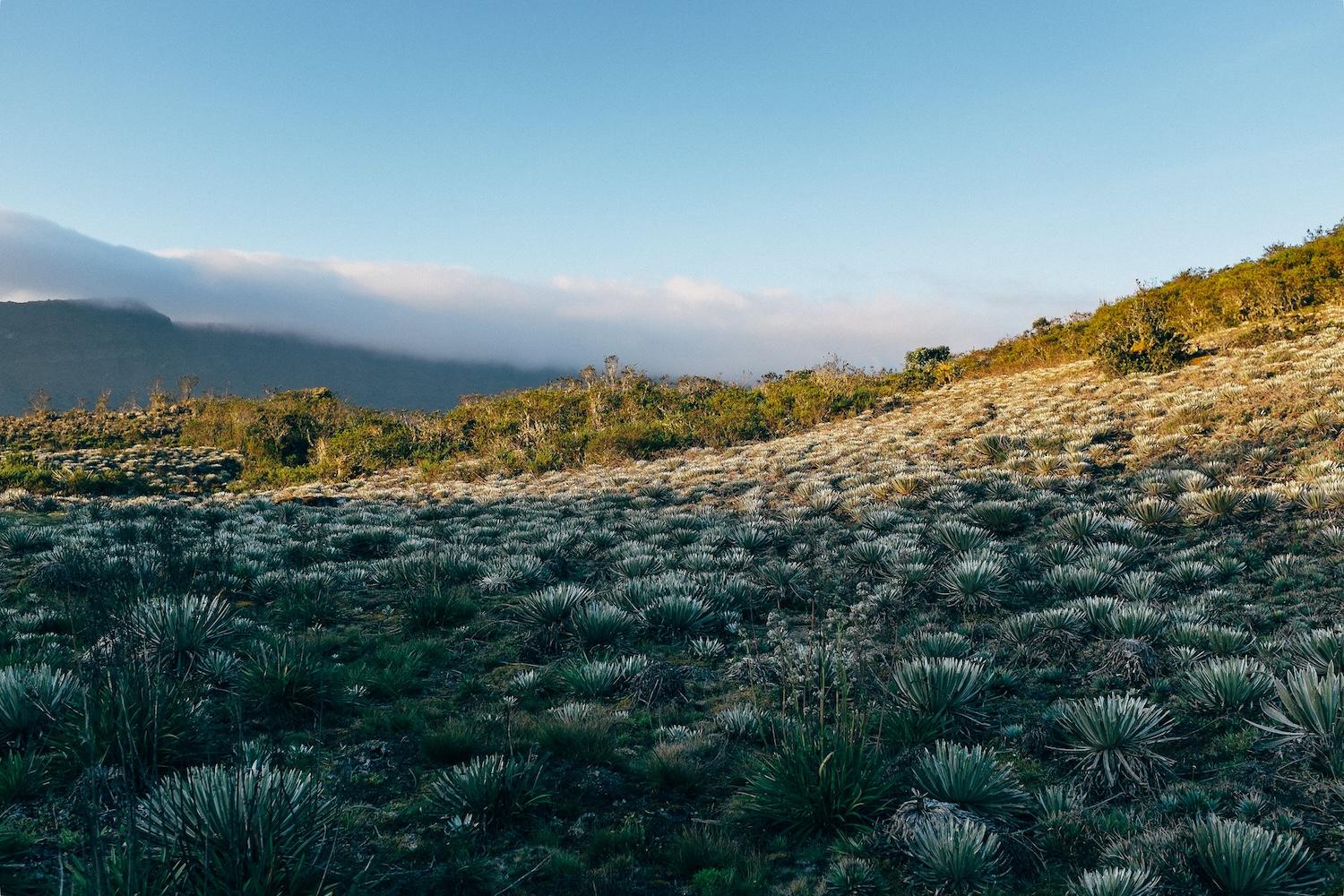

Colombia’s high-altitude wetland region known as the páramo. (Image: Quimbaya/Flickr)
As the world transitions toward renewable energy sources, the demand for minerals important in developing those technologies is surging. Minimizing the negative social and environmental impacts of mining, while maximizing the positive benefits of renewable technologies, is a difficult yet critical balancing act. Finding harmonious solutions to this dilemma is the focus of TriplePundit's series on responsible mining in the energy transition.
The World Bank’s private lending institution, the International Finance Corporation, invested $14.4 million in the Canadian mining company Eco Oro Minerals Corp. from 2009 to 2010. The company was poised to develop a gold mine in Colombia’s Santander region in the high-altitude wetlands known as the páramo.
The páramo regions in Colombia provide the country with 70 percent of its drinking water. Locals had major concerns about the protection of those water sources, particularly from cyanide pollution, as gold mining operations and large cyanide spills have led to environmental disasters in Romania, Mexico, Argentina and Turkey. Nonetheless, the mine was set for development, and it was only when a process unique to development finance institutions was invoked that the local communities, led by the organization Comité para la Defensa del Agua y del Páramo de Santurbán, were able to have their concerns addressed.
Using the International Finance Corporation’s independent accountability mechanism, the Compliance Advisor Ombudsman, the Colombian communities were able to open an investigation into the proposed mine. The process eventually resulted in the International Finance Corporation’s divestment from the project.
While gold is not critical to renewable energy technologies, the process of raising concerns with development finance institutions to trigger an investigation will be important for communities facing adverse impacts from mining projects to meet the needs of the low-carbon energy transition.
What are development finance institutions?
“Development finance institutions, or development banks, were created after the Second World War to assist European countries in recovery and development,” explains Carla Garcia Zendejas, director for people, land and resources at the Center for International Environmental Law (CIEL). The nonprofit law organization worked with Colombian communities to file grievances against the International Finance Corporation and Eco Oro.
What makes development banks different from regular commercial banks is that they are owned by national governments and have rigid environmental and social policies. In countries where political situations or the economy are unstable, investments may be too risky for private interests, so development finance institutions step in to provide funding. There is no mandate that says funds must go to local businesses, making international companies the common recipients of development bank funding, much like the Canadian company Eco Oro in Colombia.
Development banks can be owned by a single country or a group of countries. Some of the world’s largest development banks include the World Bank, the European Investment Bank, the Asian Development Bank, the InterAmerican Development Bank, and the U.S. International Development Finance Corporation.
What role do development banks play in mining projects?
Along with financing, development banks conduct environmental and social assessment processes for all projects they engage in, bringing added transparency and accountability to these projects.
As many transition mineral deposits are located in countries where private investment carries additional risk, development banks will play an important role in bringing these critical minerals to market.
Unfortunately, the environmental and social assessments are not always thorough, and project funding can be approved with meager consultation and review.
“Something we’ve seen as a consequence of the pandemic, unfortunately, is that a lot of the progress we had been making for proper human rights due diligence and environmental assessments went out the window when financing began getting fast-tracked,” says Garcia Zendejas. While those measures were meant to be temporary, many recent assessments were still just going through desk reviews, receiving approval without proper environmental and social due diligence, she says.
Although there are problems with mining projects and the assessment process of development banks, communities have more options when a development finance institution is involved, because it provides more avenues for seeking justice and more transparency into which actors are funding a project, Garcia Zendejas explains.
Assessment procedures vary between development banks, but because of human rights violations associated with development bank projects, all of them now have an independent accountability mechanism that allows for complaints to be raised and investigated.
Independent accountability mechanisms offer an avenue for justice
Independent accountability mechanisms are a separate arm of development banks that investigate complaints they receive from communities or organizations impacted by development projects.
For example, the accountability mechanism of the European Investment Bank is called the Complaints Mechanism.
“Our work focuses on maladministration of the [European Investment Bank]," says Omar El Sabee, acting head of the bank’s Complaints Mechanism Division. “Maladministration happens when the [bank] does not comply with its own standards and policies. Any person who feels impacted by any action of the bank can complain.”
Most development banks have strong environmental and social policies, but the question is how well those policies are implemented. The Complaints Mechanism at the European Investment Bank handles about 90 to 100 complaints per year, ranging from governance or access to information cases to complaints about the environmental and social impacts of projects. However, only a fraction of those complaints are found to be grounded.
During a compliance review, the Complaints Mechanism investigates whether the bank has correctly followed its own policies. Where appropriate, complainants may be offered the opportunity to resolve their issues through a dispute resolution process with the company running the development project.
In some cases, projects are halted or remediation is issued to impacted persons and communities as a result of an accountability mechanism process. It can be difficult to reach that stage, but when banks or companies are found to have operated with negligence, they do have to face consequences.
How accessible are independent accountability mechanisms?
Each development bank has different accountability procedures. One of the reasons why the European Investment Bank says it receives a higher number of complaints than other development banks is that its Complaint Mechanism is built to be accessible. However, there is always room for improvement.
“When complainants come to us, they think that we can immediately help them or that we can stop the project. We don’t have that power,” says Laurence Levaque, who shares the role as acting head of the bank’s Complaints Mechanism Division with El Sabee. “If we find project non-compliance, eventually our recommendations will trickle down and there will be changes on the ground, but it’s a long process.”
The recommendations that the Complaints Mechanism deliver are not legally binding, however their implementation is monitored, made public, and both the bank and the company take the recommendations very seriously.
While some independent accountability mechanisms will only accept complaints by directly impacted persons and require that multiple persons corroborate each complaint, the European Investment Bank’s process allows for anyone to raise concerns, and only one person needs to file a complaint to trigger the assessment process.
“Some accountability mechanisms also require the complainant to indicate which law or standard was breached,” El Sabee says. “For us, we don’t require complainants to be knowledgeable about our policies or standards. It’s enough that the person feels impacted, and it’s on us to analyze which policy or standard was not respected.”
As well, some mechanisms require that the complainant first raise the issue to the company leading the development project before proceeding to the development bank’s accountability mechanism. At the European Investment Bank, complainants can go straight to the Complaints Mechanism without consulting the company in charge of the project.
'Just do the right thing’ from the start
Development banks generally have strong policies to protect people and the environment from harm, but those policies need to be followed for them to be effective.
“You have the standards, just do the right thing,” says Garcia Zendejas, directing her words toward development banks. “You want to go in there and start a project? Fine, but follow all the policies that you have in place. Don’t wait for the company to say, ‘Oh no, I couldn’t do the consultation,’ or, ‘I couldn’t find the Indigenous peoples.’ Most of the banks have pretty good environmental and social governance systems. The problem is just a lack of implementation. When you fail, resulting in harm to communities, you must take responsibility and remedy the harm.”
In the case of the Eco Oro gold mine in the Colombian páramo, with the help of the Center for International Environmental Law, the community succeeded in having the International Finance Corporation divest from the project. The divestment, along with a series of events in Colombia — including a denied environmental license and court decisions confirming laws that banned mining in the páramo — halted the mine indefinitely.
Eco Oro, unhappy with that decision, then sued the Colombian government for about $700 million, citing lost profits from the blocked mine. The international arbitration tribunal eventually found Eco Oro entitled to damages in 2021, but a final decision on the amount is still being determined.
The community, however, considers it a victory. In the case of Eco Oro, they blocked the mine and forced the International Finance Corporation to divest from the project. Despite this success, they continue to face threats from new companies looking to develop mines in the same region.
While imperfect, independent accountability mechanisms serve a valuable purpose. Ideally, development banks would follow their own policies and conduct thorough assessments and consultations for every project, but at the very least, there is a process that impacted persons and communities can use to contest the validity of those assessments.
This process is only available to projects that receive funding or investment from a development finance institution, but it is a viable way to reduce the social and environmental harms of mining as the world ramps up the low-carbon energy transition.
‘Puppies for Parole’ Offers a Second Chance for Incarcerated People and Shelter Dogs in Missouri
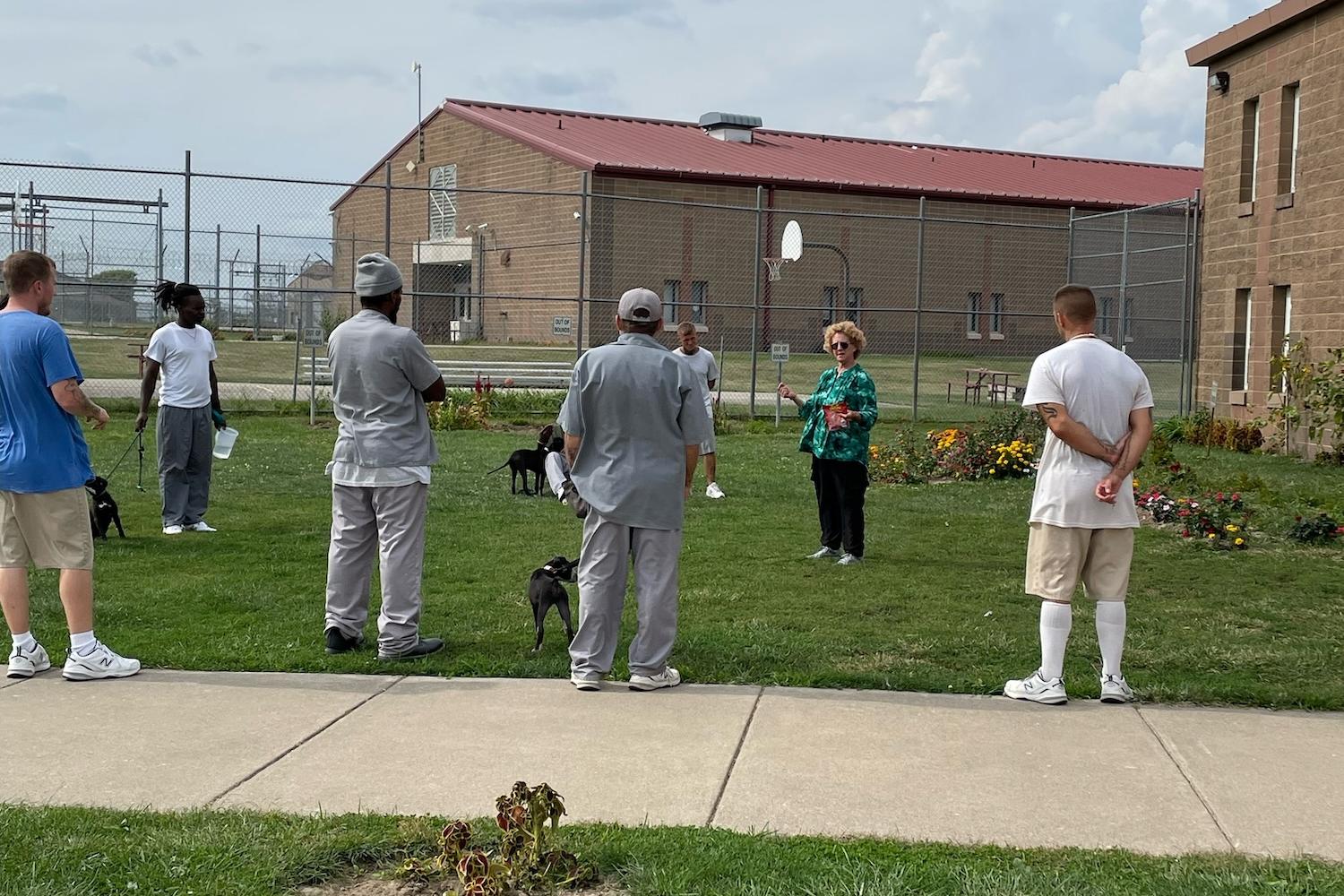

Puppies for Parole recognizes the importance in second chances for all. The program offers incarcerated people in Missouri an opportunity to train and socialize shelter dogs, making them more adoptable. In turn, the program offers participants the therapeutic effects of working with animals, as well as vocational training and the chance to give back to their communities.
The initiative began in 2010 as a partnership between the Missouri Department of Corrections and a network of animal shelters and rescue organizations across the state. Royal Canin, a leader in science-based cat and dog health nutrition and a division of the Mars family of brands, started donating food when packaging manager Michael Newkirk heard about the program and saw a perfect fit for Royal Canin.
Royal Canin, whose U.S. headquarters is located in St. Charles, Missouri, began providing Puppies for Parole with diets from its manufacturing facility in Rolla, Missouri. Newkirk started driving the food to local correctional facilities himself, beginning a more than 13-years-and-counting relationship between Royal Canin and Puppies for Parole.
Making a difference in the lives of people and animals
Around 3.1 million dogs come into U.S. shelters every year, according to the ASPCA. Puppies for Parole offers a helping hand, both to shelter pets and the people who train them.
Puppies for Parole runs in 16 of the 20 state correctional facilities in Missouri, making it one of the largest prison dog programs in the country. The 10-week program, which operates solely through donations and volunteers, has achieved over 95 percent adoption rates. This past summer, Puppies for Parole and Royal Canin celebrated their 7,000th dog to be adopted out of a shelter into a forever home.
The dogs are adopted out of their original shelter after graduating from the 10 weeks of obedience training and socialization. Some dogs are additionally trained to be service animals for veterans with post-traumatic stress disorder or people living with disabilities.
From 2011 to 2023, Royal Canin donated an average 25,000 pounds of Royal Canin and Eukanuba products annually to Puppies for Parole, totaling about 300,000 pounds of food and over 600,000 meals donated.
“We thought, wouldn't it be great if we were [not only] the nutrition, [but also] the education and fun provider?” said Racquel White, vice president of corporate affairs at Royal Canin North America. The company also provides educational materials around pet nutrition and training best practices, as well as toys for the dogs.
Requirements for potential trainers include two years of good behavior, after which they can join a waiting list. Selected participants will join the 10-week program under an apprenticeship with the U.S. Department of Labor. Upon completing the program — which offers formal, on-the-job, and individualized training — participants earn a certificate in animal handling, recognized in all 50 states. Approximately 5,000 individuals in Missouri prisons have participated in the program since its inception in 2010.
“Participants in the program have shared with us that these dogs have made such a huge difference in their lives [by] giving them something to live for,” White said. “We all know the impact of pets. The impact on this particular group of people, however, seems to be exponentially more positive.”
Creating positive pathways for re-entry
Programs like Puppies for Parole can offer incarcerated people pathways to work upon release, which is often difficult to find due to stigmas about people who have served time.
Trey Dawson, a former participant in Puppies for Parole, is among those who continued training dogs after his release from prison. He went on to found the dog training business Backyard K9, which the Columbia, Missouri, community awarded a Gold medal in Pet Training. Backyard K9 is also a nominee for the Missourian Progress Awards for Entrepreneurship, and Dawson has visited multiple Missouri correctional centers to share his story.
“The program also creates a chance for participants to give back to the community,” White said. One trainer told her that “he is able to give these dogs a chance that he may very well never have, which is to go into a home with a family living on the outside, so to speak.”
Learn more about Puppies for Parole here, or click here to see dogs available for adoption through the program.
This article series is sponsored by Mars and produced by the TriplePundit editorial team.
Image courtesy of Puppies for Parole
Companies Can Do More to Help Everyday People Reduce Emissions
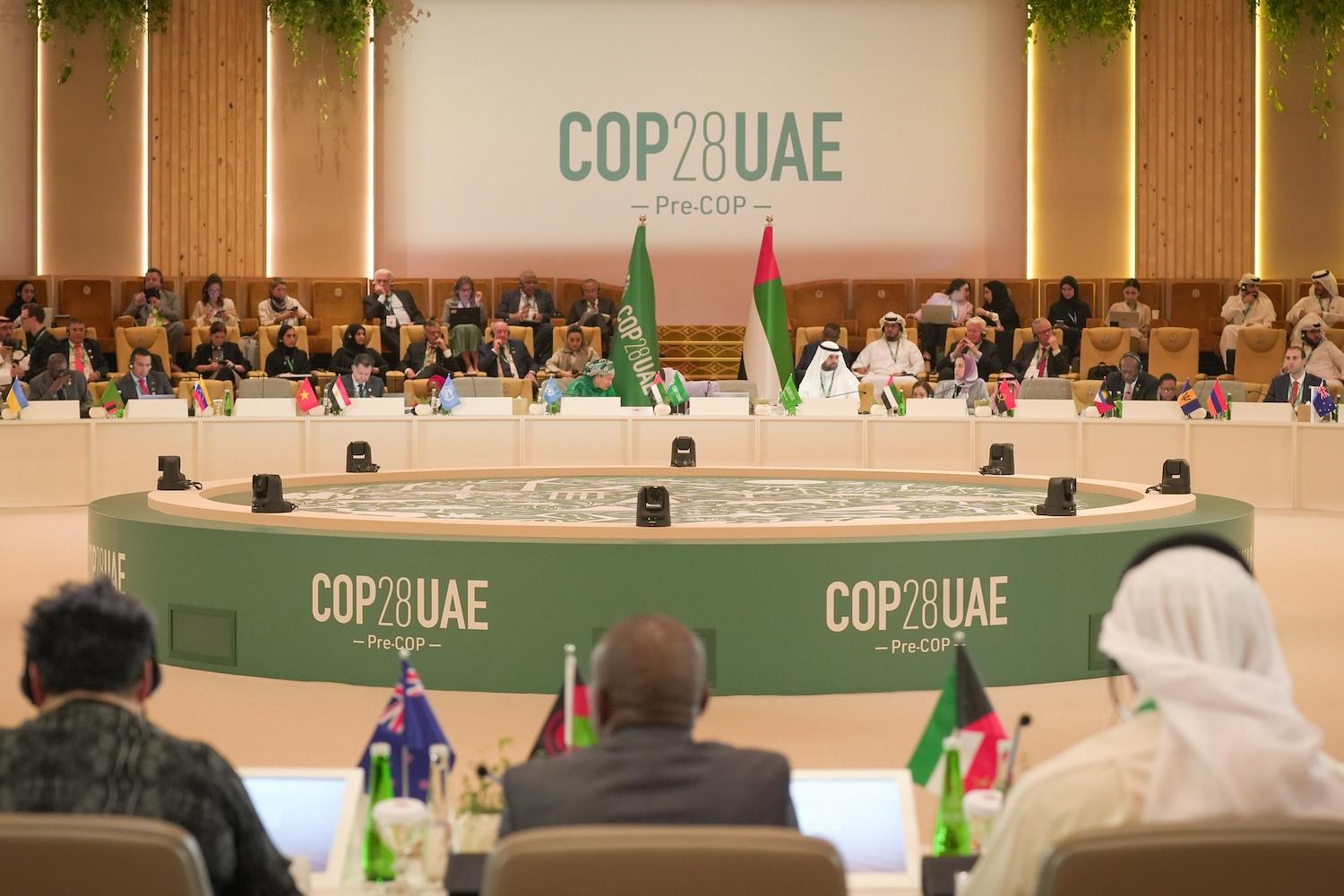

World leaders gather for a plenary discussion on the Global Stocktake at Pre-COP events in Abu Dhabi on Oct. 31, 2023. (Image: COP28 UAE/Flickr)
This year, the build-up to the United Nations annual Conference of the Parties (COP28) has been given greater urgency by the first Global Stocktake report. Published earlier this fall, the report sends the clear message that time is rapidly running out to limit global heating. Without drastic cuts in emissions of around 50 percent by 2030, we will lose touch with a pathway to a 1.5-degree world, where the worst impacts of global heating can still be managed. Only urgent, short-term actions can deliver the temperature targets fixed in the Paris Agreement.
The Global Stocktake report also highlighted the role that consumer behavior plays in generating emissions, calling on countries to shift to sustainable diets, halve food loss and waste, and transition at least two-thirds of all passenger travel to fossil fuel-free methods of transport by 2030. For business leaders committed to doing their part to limit emissions, this raises important questions about the viability of business models that prioritize immediate, consumer-driven economic growth over the macroeconomic risks of inevitable ecosystem collapse. Can we continue to drive revenue while concurrently safeguarding our long-term environmental and social wellbeing?
Over the past two decades, more than 30 countries have given us reason to believe that we can. Ireland, for example, cut greenhouse gas emissions by 42 percent from 2005 to 2020 while growing its economy by 81 percent, outgunning most of the major developed economies. This is evidence that sustainability and economic consumption do not need to work in conflict.
For Mastercard, playing a role in driving the wider decoupling of emissions and growth is a vital part of our responsibility as a business and as important to us as delivering on our own net-zero targets. We believe that companies can play an active role in supporting the transition to more sustainable consumption patterns. Whether it is the choice between two products, or the choice to support a less wasteful business model, sustainable consumption is about making smarter, more informed, more conscious decisions about what and how we are consuming.
As a payments technology company, Mastercard finds that we're in a unique position to collaborate across industries to inform, inspire, and enable a new movement of sustainable consumers. Businesses need to provide consumers with the knowledge and data to make more informed purchasing decisions and inspire individuals to understand how their decisions can have a positive impact. Mastercard has increased its efforts over the last few years to equip consumers with information about the impact of their consumption choices, focusing on an education-first approach. We developed the Mastercard Carbon Calculator with our partner Doconomy to help people track and understand the estimated carbon footprint of their purchases. This goes beyond simply choosing one product over another — it empowers consumers to gain a holistic view of the impact that their spending habits have on the planet.
We know that helping drive the wider decoupling of emissions and growth is essential to achieving an inclusive and sustainable economy and a vital part of our responsibility as a business. We’re working to leverage the power of our network of 90 million merchants and nearly 3 billion cardholders so that soon, every swipe, click or tap will let a consumer contribute back to the planet and fight climate change.
The Global Stocktake is clear: We cannot wait for better, more sustainable consumption to evolve organically out of business as usual. We must double down on our efforts to bring transformational solutions to our customers and partners, driving circularity, efficiency, and transparency through high-integrity data, digital tools, and consumer incentives.
We believe that this emerging ecosystem of tech-enabled sustainable consumption will be most effectively realized through collaboration. That means solving problems, sharing learning and insights, and supporting entrepreneurs and innovators with partnerships and routes to market. Every business has a part to play. We’re committed to bringing transformational solutions to our customers and partners so that everyone, everywhere, will be able to make more informed, more conscious decisions today with hope to create a more sustainable and equitable future for tomorrow. We hope you’ll join us.
This article series is sponsored by Mastercard and produced by the TriplePundit editorial team.
Helping Doctors Advance Cardiovascular Health Equity


(Image: peopleimages.com/Adobe Stock)
Research shows that women and people of color often suffer from advanced heart and vascular disease at disproportionately high rates. But their burden doesn’t end there. While these populations tend to be overrepresented in their disease rates, they also tend to be underrepresented in their treatment.
For example, take peripheral artery disease (PAD), a potentially serious vascular condition that reduces blood flow to the limbs, usually the legs. Black Americans have twice the rate of PAD than their white counterparts. Yet while PAD is a condition that can be managed if caught and treated early enough, Black patients also have dramatically worse outcomes, including being twice as likely to receive amputations due to severely blocked blood flow.
Treatment rates for other cardiovascular conditions show similar disparities, including:
- Coronary artery disease: Hispanic patients with heart attack symptoms are 15 percent less likely to receive percutaneous coronary intervention (PCI, also called angioplasty), a procedure to open blocked coronary arteries.
- Heart failure: Black and Hispanic patients are less likely to receive a pacemaker or implantable defibrillator to keep their hearts beating normally.
- Atrial fibrillation: Black patients are 50 percent less likely than white patients to receive a treatment called catheter ablation and represent only 4 percent of those who undergo an effective stroke-prevention treatment called left atrial appendage closure. Black AFib patients also have double the risk of stroke as white patients.
- Heart attack: Women wait 30 percent longer than men to receive cardiovascular care. Such delays are associated with worse outcomes: Women who have a heart attack are nearly twice as likely to die in the hospital than men.
That last statistic is especially personal for me. A few years ago, my mother, a Black retired nurse, developed terrible leg pain. Over three weeks she visited three different doctors, but none could provide a diagnosis or reduce her pain; even so, my mother’s reverence for physicians made her reluctant to seek yet another opinion. At last, however, she saw a fourth doctor, who realized my mother had had a heart attack and hurried her into treatment. Her just-in-time diagnosis allowed her to undergo life-saving procedures, for which I am thankful. She received the gift of two and a half extra years of life before her passing last November from her chronic coronary artery disease. But no one should struggle to get critical care the way my mother did.
Working with health systems to close the treatment gap
Today, health systems have begun recognizing the need to close treatment gaps and provide patients the equitable access they deserve. But creating change can be hard, especially with a problem so vast and deeply entrenched as health inequity. The difficulty in knowing where to start can be enough to paralyze even the most educated individuals and well-meaning organizations.
Fortunately, this is where equity-minded healthcare organizations have stepped up to help. Our 20-year-strong Close the Gap initiative at Boston Scientific, for example, supports healthcare systems in taking meaningful steps toward greater healthcare access for those who are typically underserved, including Black, Hispanic, and women patients living with cardiovascular disease. Through its targeted Heart and Vascular Health Equity Level-up Program, Close the Gap uncovers care disparities and collaborates with healthcare providers on strategies to better engage and treat these underrepresented groups, with an emphasis on improving the diverse patient experience through system change and building trust.
Close the Gap’s approach is also data-driven. Using national and local prevalence statistics for four common disease states (peripheral artery disease, coronary artery disease, atrial fibrillation, and heart failure), the team uses ZIP code-based data to identify which specific demographics are missing access to equitable care. Close the Gap then collaborates with providers and administrators to connect with those patient populations and improve the care experience based on health equity best practices.
Last year, for example, Close the Gap was approached by Piedmont Healthcare, a 22-hospital system that serves 3.4 million cardiology patients across Georgia. “We wanted to introspectively look at how we were faring in identifying individuals at high cardiovascular risk and providing care relative to their sex and ethnicity,” explains Dr. David Kandzari, chief of Piedmont Heart Institute. “For us, Close the Gap became the catalyst.”
Digging into the data, the Close the Gap and Piedmont teams looked at the treatment rates of a minimally invasive procedure used to treat coronary artery disease – the most common type of heart disease in the U.S. – and compared groups according to ethnicity and sex. While these procedures were broadly used across all patients, opportunities emerged to further explore differences. With those findings, the team came up with customized strategies for Piedmont, including plans for sharing information at a physician retreat, distributing patient educational materials in English and Spanish, and launching an educational web page on the Piedmont website.
Using that action plan, Piedmont has gotten off to a running start. “We’ve already raised awareness to more than 7,000 providers across the healthcare system,” says Dr. Kandzari, adding that Piedmont is also distributing patient materials through community programs, health fairs, and churches. “It’s been a rewarding experience for everyone here, and something we’re proud of,” he says. “And it’s motivated us to not stop there. This is really about a continuing initiative toward greater equity, so that all patients can receive the care they need.”
Equity progress over time, not overnight
When it comes to advancing health equity, we know that progress comes over time, not overnight. But those of us involved in this work can see how each small victory gets us a little closer to our goals. Each hospital willing to have those tough conversations, each doctor who takes a second look at a patient in light of a new awareness, each person who reads a flyer about cardiovascular health and decides to schedule a screening – every one of these is a step toward systemic change for the better.
The social return on this investment is worth it. Certainly, every life improved through more equitable treatment is well worth it. We’ll keep thoughtfully moving the work forward, celebrating every small victory along the way, until the day healthcare is finally fair and accessible to all.
This article series is sponsored by Boston Scientific.
COP28: What to Expect at This Year's Global Climate Talks
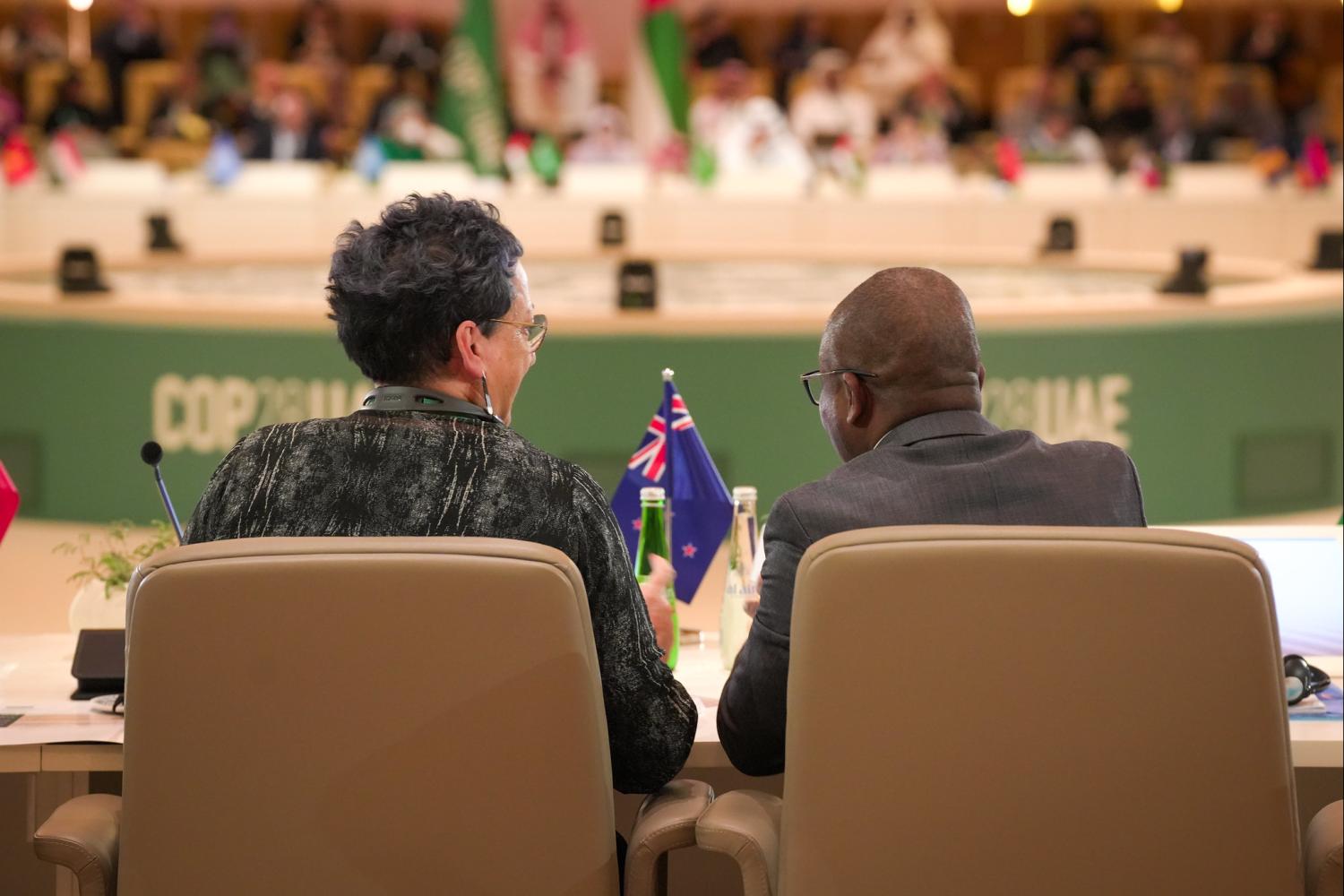

A plenary session focused on the Global Stocktake at the Pre-COP event in Abu Dhabi on Oct. 31, 2023. (Image: COP28 UAE/Flickr)
It’s that time of year again. For three decades, leaders from countries around the world have convened to discuss solutions to the climate crisis at the annual United Nations climate talks. Now, heads of state from almost every country in the world participate alongside thousands of other stakeholders including business leaders, Indigenous Peoples, activists and scientists.
The talks are recognized as the world’s only multi-country, decision-making body on climate issues. The 28th installment (COP28) begins in Dubai this week, where the stark reality of falling behind the targets set in the Paris Agreement — meant to limit the increase in global temperature to 1.5 degrees Celsius (2.7 degrees Fahrenheit) above pre-industrial levels — has ignited sentiments spanning from concern to hope, and from pragmatism to optimism.
What outcomes are anticipated from COP28? And what are the priorities for environmental groups at the summit? We spoke with teams at Oxfam, World Resources Institute, World Wildlife Fund, 350.org and Rainforest Alliance to understand the pivotal topics set to be addressed at the talks this year.
The outcome and response to the Global Stocktake is critical to pave a new way forward
COP28 is a milestone year as it will host the first Global Stocktake to evaluate the world's progress in achieving the climate goals set in the 2015 Paris Agreement, signed by 195 nations at COP21.
The Paris Agreement established the stocktake as a two-year process that occurs every five years and becomes the basis of charting a path forward. The stocktakes are meant to inform the greenhouse gas reductions each country commits to under the Paris Agreement, formally known as nationally determined contributions or NDCs, which are also updated every five years.
“We'd like to see greater ambition in our 2030 targets from countries — so really making the Global Stocktake a moment of learning and a moment of action,” said Marcene Mitchell, senior vice president at WWF.
Direction on updating Nationally Determined Contributions (NDCs) is key: “The [Global Stocktake] is a technical document that talks about economy-wide reduction of emissions,” said Ani Dasgupta, president and CEO of the World Resources Institute, in a recent press briefing. “An ideal outcome, which we don't know will happen, would be for [COP28] negotiated text to refer to the [Global Stocktake] and countries to agree that they will build their next NDC on that basis, ready for Berlin in 2025.”
The stocktake is set to be completed at COP28. But early findings indicate that current greenhouse gas reductions and commitments are not consistent with the Paris Agreement’s goal to limit global temperature rise to 1.5 degrees Celsius this century, which climate scientists deem a crucial tipping point. “For the first time, there is actual evidence of how far we are from the actions we're taking to the 1.5 degree Celsius goal that we all agreed to in Paris,” Dasgupta said. “A tougher NDC or the right NDC would be ones that takes the [Global Stocktake] into account and reflect its findings.”
In particular, sub-national governments — like cities and states — have been slow to commit to the Paris Agreement, but organizers hope this will change at COP28. “Our research shows that cities are a key vehicle to implement a climate action and raise ambition. But we see that they lack targets, especially in terms of transportation and building efficiency,” said Rogier van den Berg, global director of the WRI Ross Center for Sustainable Cities. “We expect at COP28 to see the city's voice raised with the opportunity to include more city specific targets in the revised NDCs.”
The next NDC updates are due in 2025 and must include short-term targets for reducing greenhouse gas emissions over the next 10 years. “What we need out of this COP are some strong signals about what needs to happen in those NDCs,” added David Waskow, director of international climate action at WRI’s Climate Program.
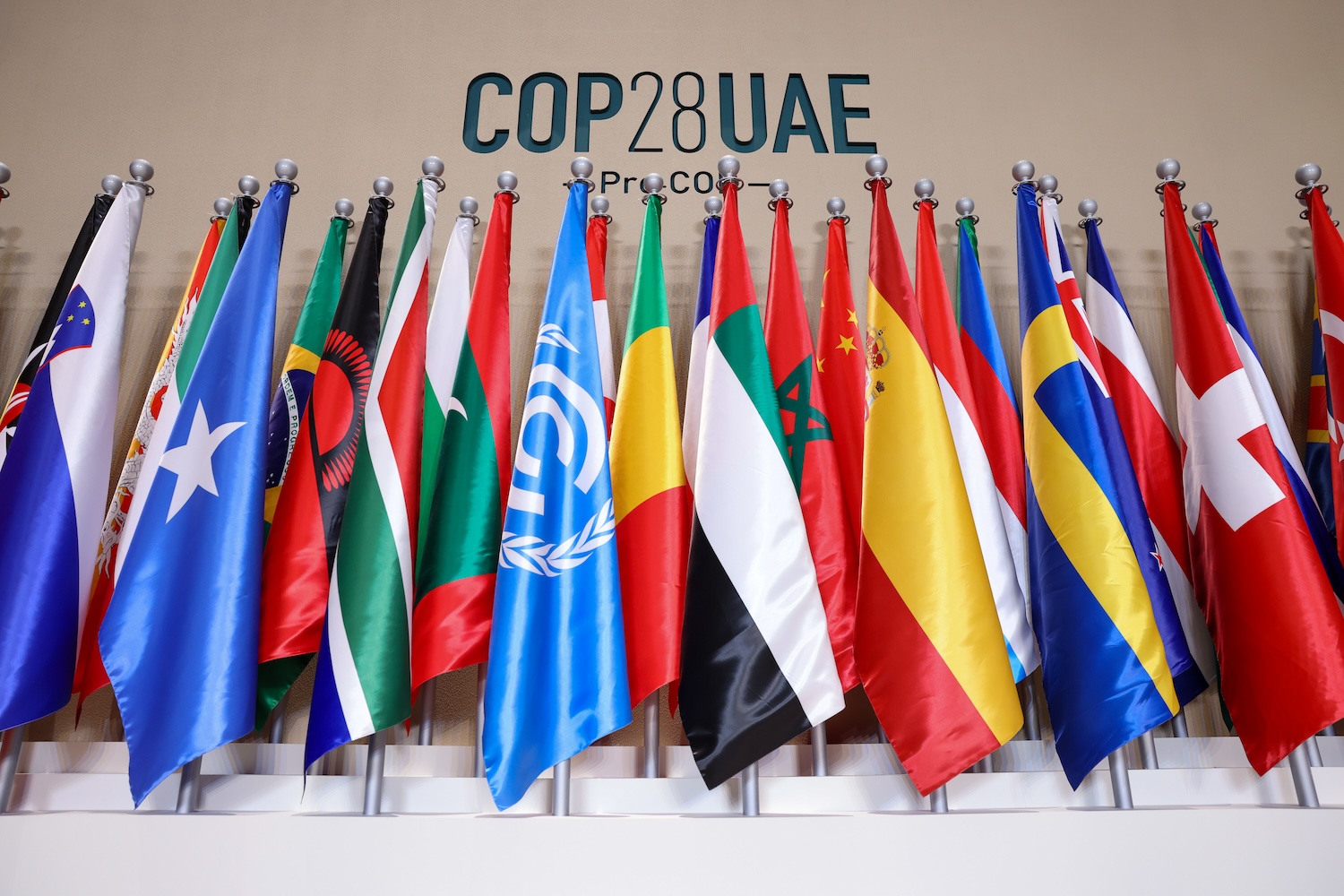
The energy transition from fossil fuels to renewables is urgent
Fossil fuels — coal, oil and gas — account for over 75 percent of global greenhouse gas (GHG) emissions and nearly 90 percent of all carbon dioxide emissions. GHG emissions trap the sun’s heat, causing global temperatures to rise.
While a commitment to phase out fossil fuels was left out of the final text at last year’s climate talks Egypt, 81 countries supported the effort. “That number has been growing, and I think there has never been that much momentum for this discussion,” said Andreas Sieber, associate director of policy and campaigns at 350.org.
To stay on track with the Paris Agreement, the global community must reduce greenhouse gas emissions by 43 percent by 2030, compared to 2019 levels, according to the latest report from the U.N. Intergovernmental Panel on Climate Change (IPCC). This reduction is crucial in order to prevent consequences of climate change, such as more frequent and severe droughts and heatwaves, scientists wrote in the report.
“We need to reduce emissions by 60 percent by 2035 … up from the 43 percent reductions that are needed by 2030,” said Waskow from WRI's Climate Program. “It's important to note that 2035 puts us well along the way to mid-century by when we need to reach net-zero globally. There has to be financial commitment to having a strong outcome next year that will underpin a country's ability to take that action in their NDCs.”
Within this conversation about a fossil fuel phase-out is a debate over whether capturing and storing carbon is a climate solution or a distraction from policies to cut down fossil fuels. It could contribute toward the goals, however not significantly, organizers said. “We know we have to reduce by about 15 gigatons of emissions. Carbon capture and storage will save us about one gigaton,” said Jennifer Layke, global director of WRI’s Energy Program.
"Phase out" or "phase down" fossil fuel production: There’s also a debate over whether to "phase out" or "phase down" fossil fuels, and this will be a focal point at the COP28 climate talks. Dasgupta from WRI says that what we should look for at COP28 is “any language that actually creates a time-bound process of reducing fossil fuel.”
Just over 150 countries committed to achieve net-zero emissions by 2050 and are discussing the transition away from fossil fuels. However, contradicting these commitments, the 2023 Production Gap Report finds that governments plan to produce around 110 percent more fossil fuels in 2030 than would be consistent with limiting temperature rise to 1.5 degrees Celsius, and 69 percent more than would be consistent with 2 degrees.
“Phasing out fossil fuels, while accelerating renewable energy, that's the very first outcome we'd like to see from COP28,” said Mitchell of the World Wildlife Fund. “We would really like to see the countries come together to talk about the eventual phase-out of fossil fuels by mid-century. And to do that, we need to accelerate renewable energy deployment. So, we would really like to see some goals around the deployment of renewable energy and the acceleration of that. It's coming, but it's not coming fast enough.”
In the run-up to COP28, the International Energy Agency identified actions that are essential to ensure the 1.5-degree goal stays within reach. This includes an orderly decline in the use of fossil fuels and tripling of renewable energy capacity by 2030. Also crucial is doubling the rate of energy efficiency progress this decade.

Climate finance for developing countries needs to scale up immediately
Twelve years ago, at COP15 in Copenhagen, wealthier nations pledged to channel US$100 billion a year to help less wealthy nations cope with climate change by 2020. This target has been repeatedly missed.
“We need to scale up that $100 billion per year finance pledged by the developed countries,” said Mitchell of WWF. “We need to align our private and public financial flows with climate objectives. We really need to start being serious about putting the funding to it.”
The Inflation Reduction Act of 2022 will bring an estimated $370 billion in climate action projects and financing into the U.S. economy and partially fund the United States’ NDC, Mitchell said. “We'd like to see that type of commitment not only on the domestic markets, but internationally between the developed world and the developing world to help them get on that path,” she said. “Without external funding, the Global South is not going to be able to meet the goals.”
Developing countries will need $200 billion to $250 billion every year by 2030 to adapt to climate change, the U.N. Framework Convention on Climate Change (UNFCCC) estimates. The Green Climate Fund, the United Nations' main fund for helping vulnerable countries cope with climate change, said earlier this year that it raised $9.3 billion — falling short of its $10 billion target after wealthy nations failed to pay in.
Meanwhile climate-related finance for the agriculture and land-use sector, particularly in low- and middle-income countries, has significantly decreased in recent years, posing a challenge to meeting the dual adaptation and mitigation goals of the Paris Agreement, said Leila Yassine, global advocacy manager for nature at the Rainforest Alliance. “We must ensure that international financial mechanisms become simpler and more accessible, allowing this finance to flow toward locally-led and nature-based solutions in the communities that need them most,” she said.
Operationalization of the Loss and Damage Fund: The Loss and Damage Fund for developing nations, established at COP27 in Sharm El Sheikh, was considered a "breakthrough agreement." However, it came without substantial pledges and no operational plan.
“We must understand that the energy crisis is unjust because those responsible for it are not suffering the consequences. The crisis is exasperating inequality between the rich and poor,” said Jacobo Ocharan, lead of the Oxfam Climate Initiative “The Loss and Damage Fund is a win, however we are extremely worried that there is no agreement on who is going to cover the fund, who will contribute and how much.”
Recently, a special U.N. committee tasked with implementing the fund met for the fifth time in Abu Dhabi, following a deadlock in Egypt last month, to finalize recommendations that will be put to governments when they meet at COP28 in Dubai. The impasse was over which entity should oversee the fund, who should pay, and which countries would be eligible to receive funding.
To get all countries on board, it was agreed the World Bank would serve as interim trustee and host of the fund for a four-year period. “If the World Bank is to host the fund, one of the criteria for them for hosting a financial intermediary fund is that three countries make a pledge to the tune of $200 million. So that's the bare minimum that one can work with,” said Preety Bhandari, senior advisor to the climate program at WRI.
The goal is to have the fund up and running by 2024.
Increased investment in renewables: Annual capital spending on clean energy in emerging and developing economies needs to expand by more than seven times, to above $1 trillion, by the end of the 2020s in order to put the world on track to reach net-zero emissions by 2050, according to the International Energy Agency.
Of the current $1.7 trillion allocated to clean energy globally, only about 15 percent is invested in the Global South outside China, Sieber from 350.org wrote in Climate Home News last month. By 2030, we will need around $1.9 trillion of yearly investment in the Global South outside China — from both public- and private-sector sources, the International Energy Agency estimates.
350.org joined more than 100 organizations in an open letter to COP28 president Sultan Al Jaber earlier this month, demanding a strong formal outcome on the energy transition. This includes the phase-out of fossil fuels, tripling of renewable energy capacity to 11,000 gigawatts by 2030, and a significant increase in concessional finance from developed countries to support a renewable, efficient, and equitable energy transition in developing countries.
The bottom line
All in all, a multitude of complex and interconnected challenges need to be addressed at COP28 for the world to get back on track. Summit President Sultan Al Jaber emphasized in his letters to parties that “it is not too late to correct course” and “we're playing catch-up to keep 1.5°C alive.” He calls for “optimism and unwavering resolve” at the talks this year, though the outcome remains to be seen.
TriplePundit will be in Dubai reporting from COP28. Sign up for our daily newsletter to follow along with our coverage.